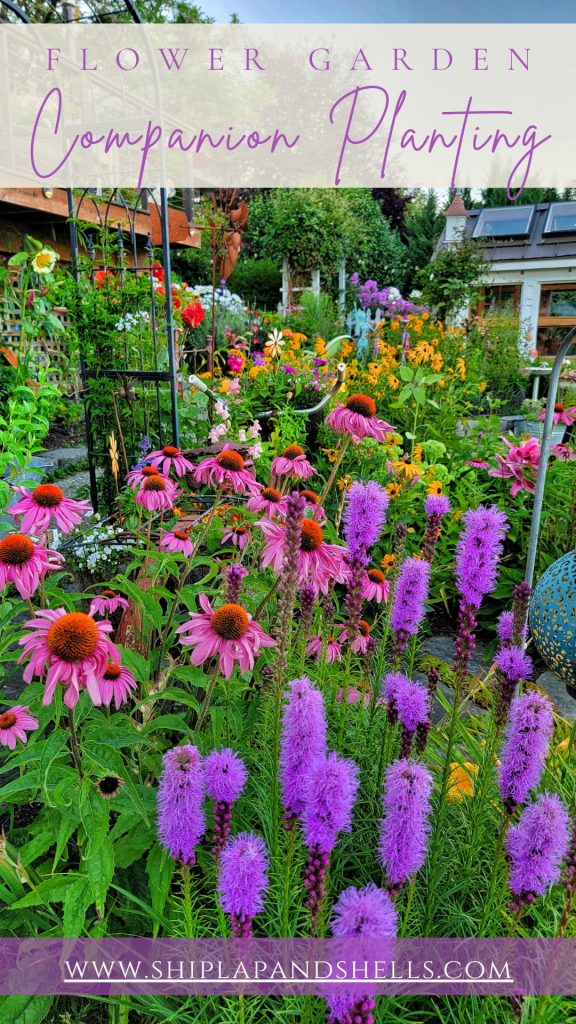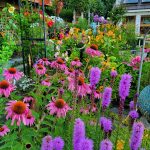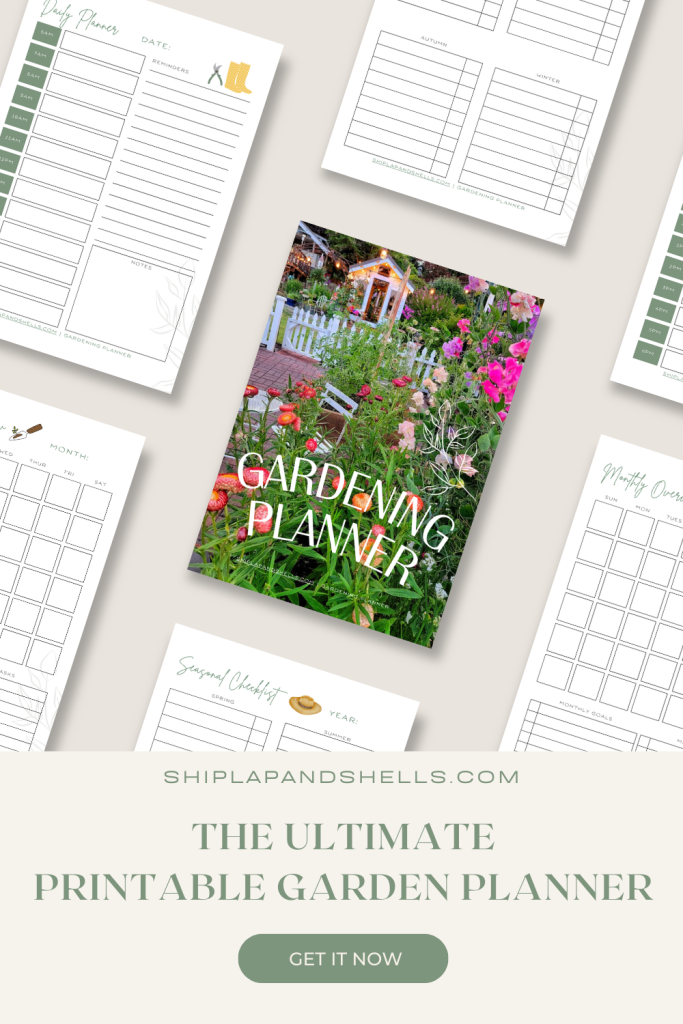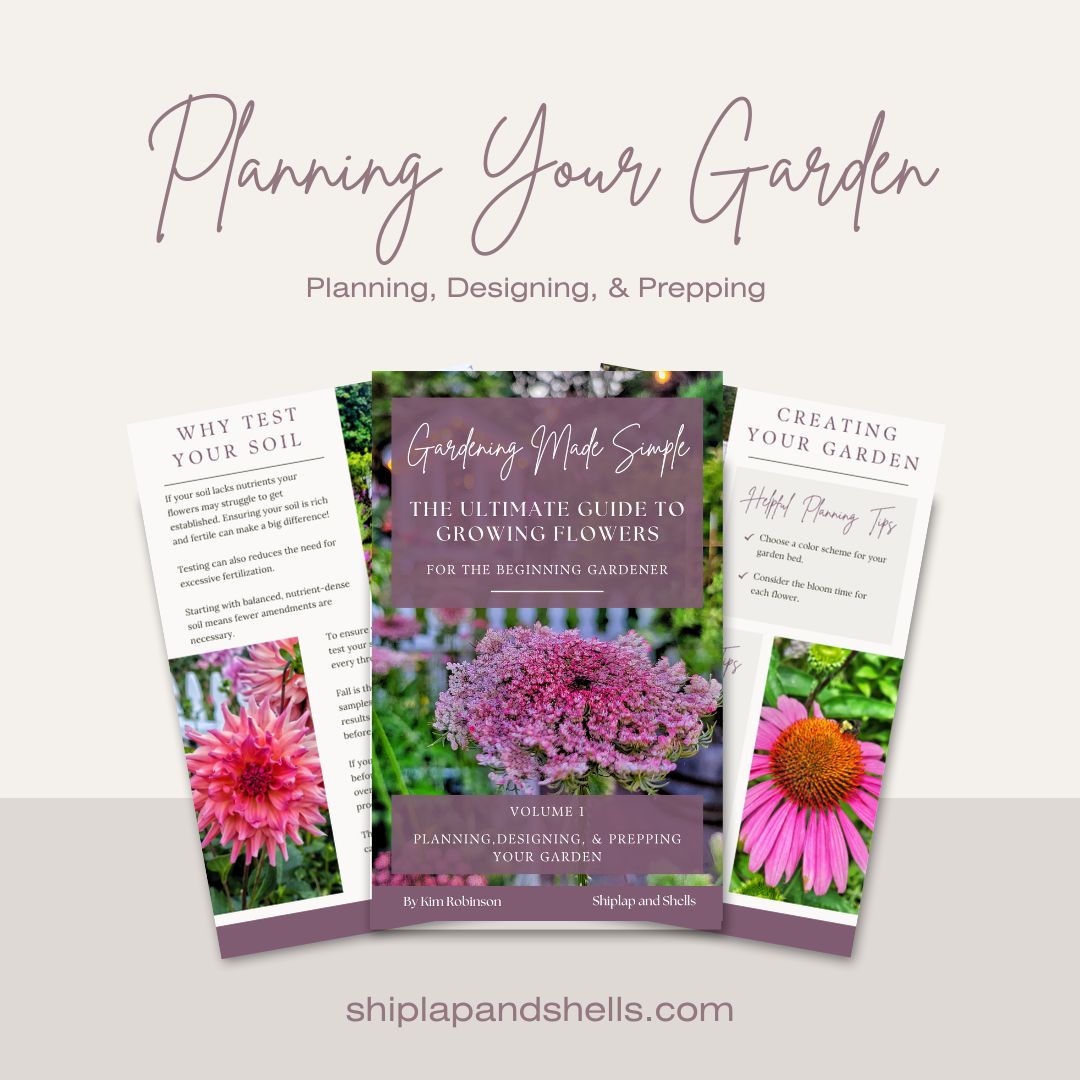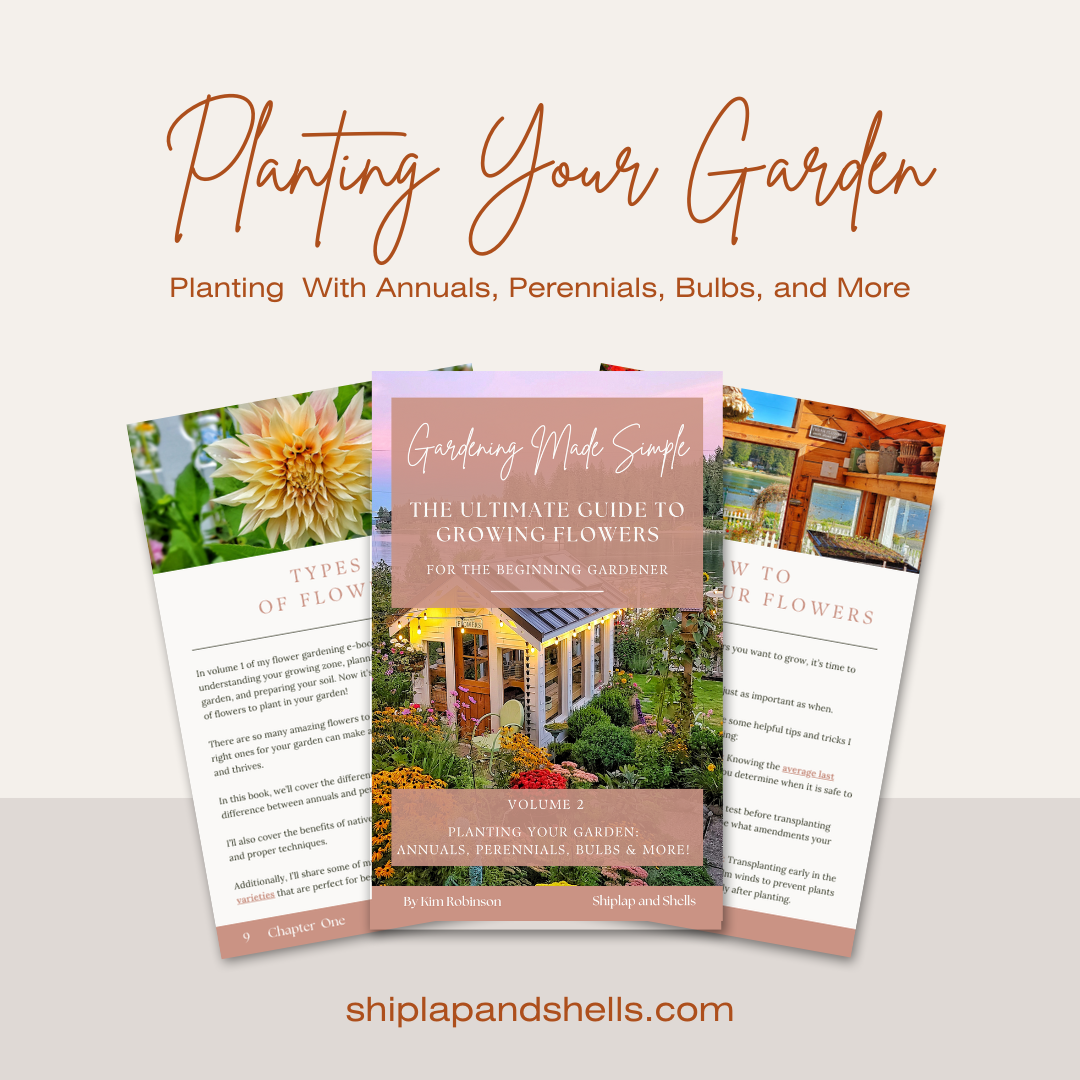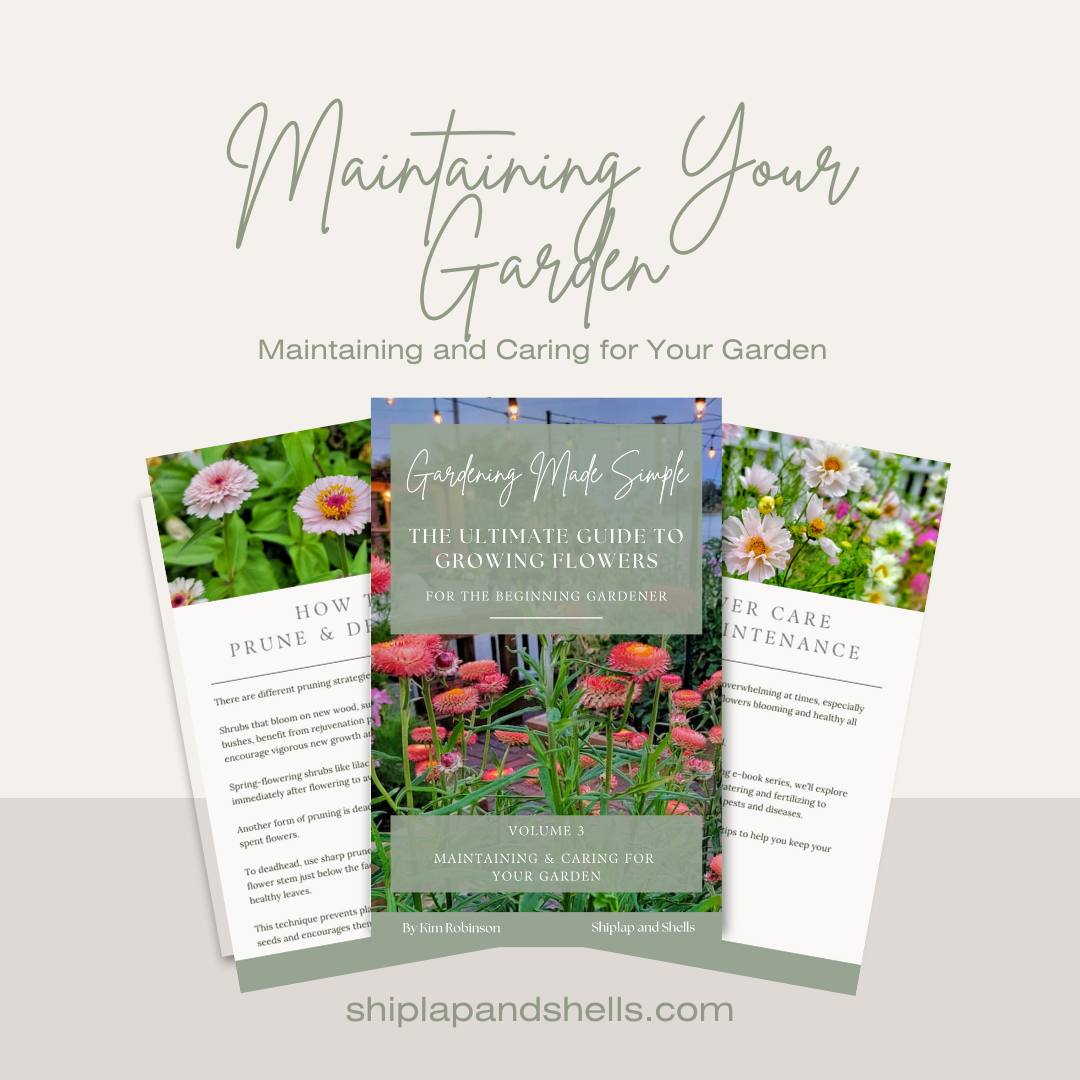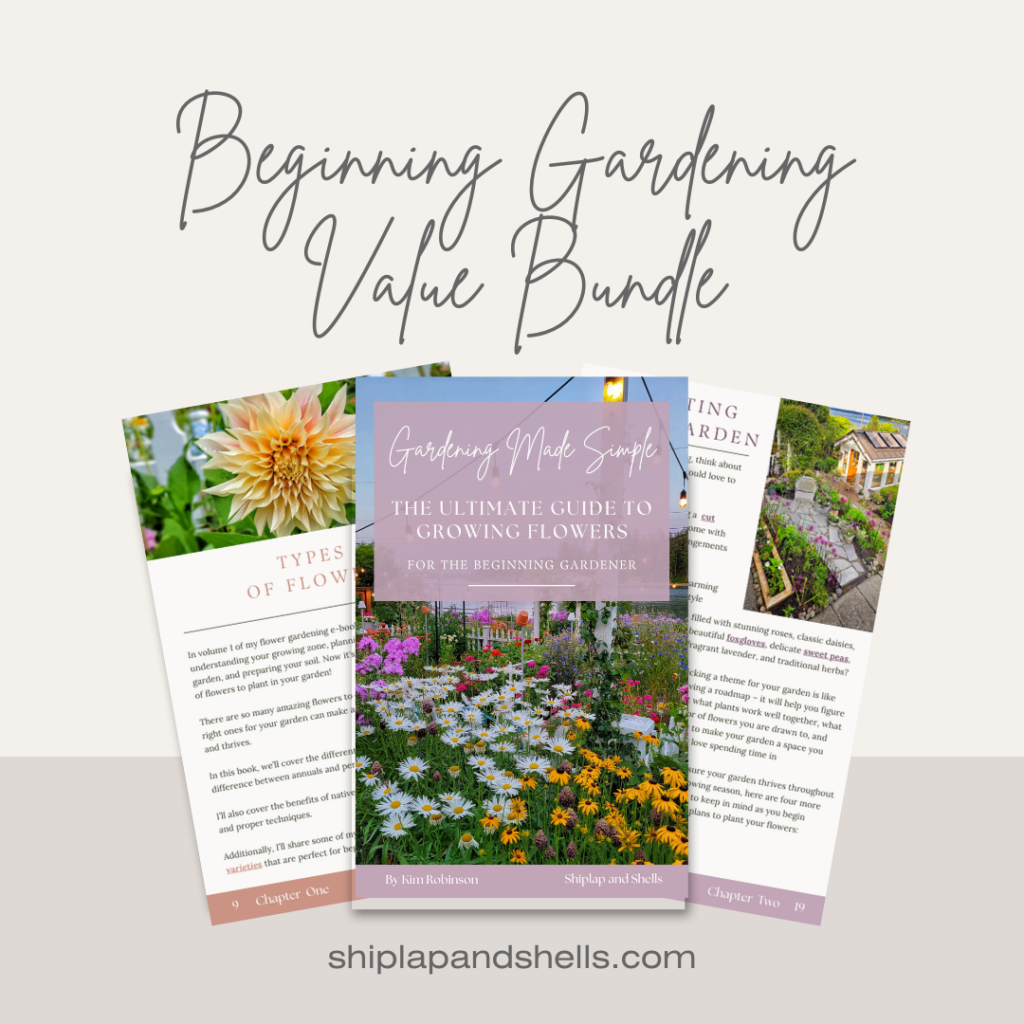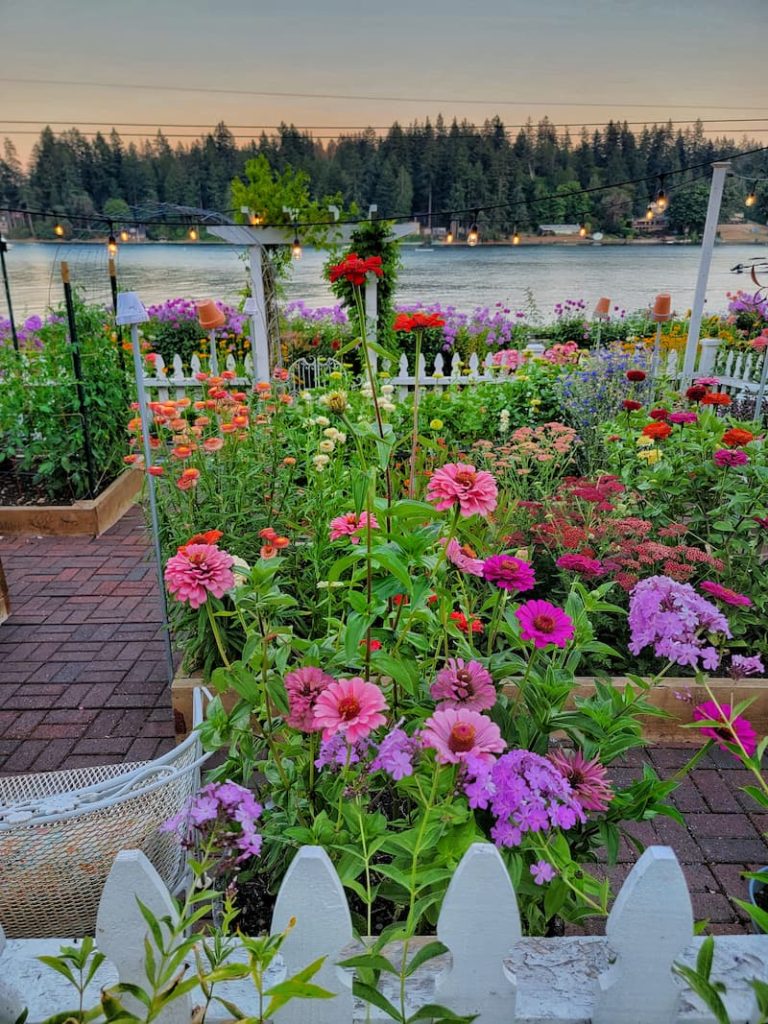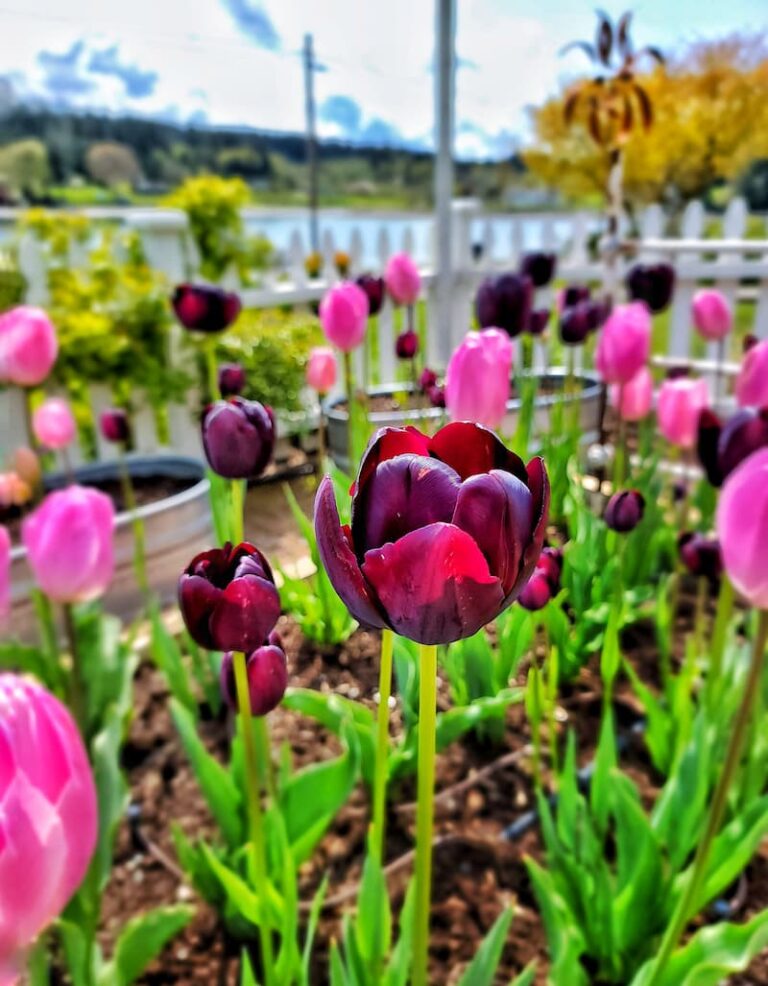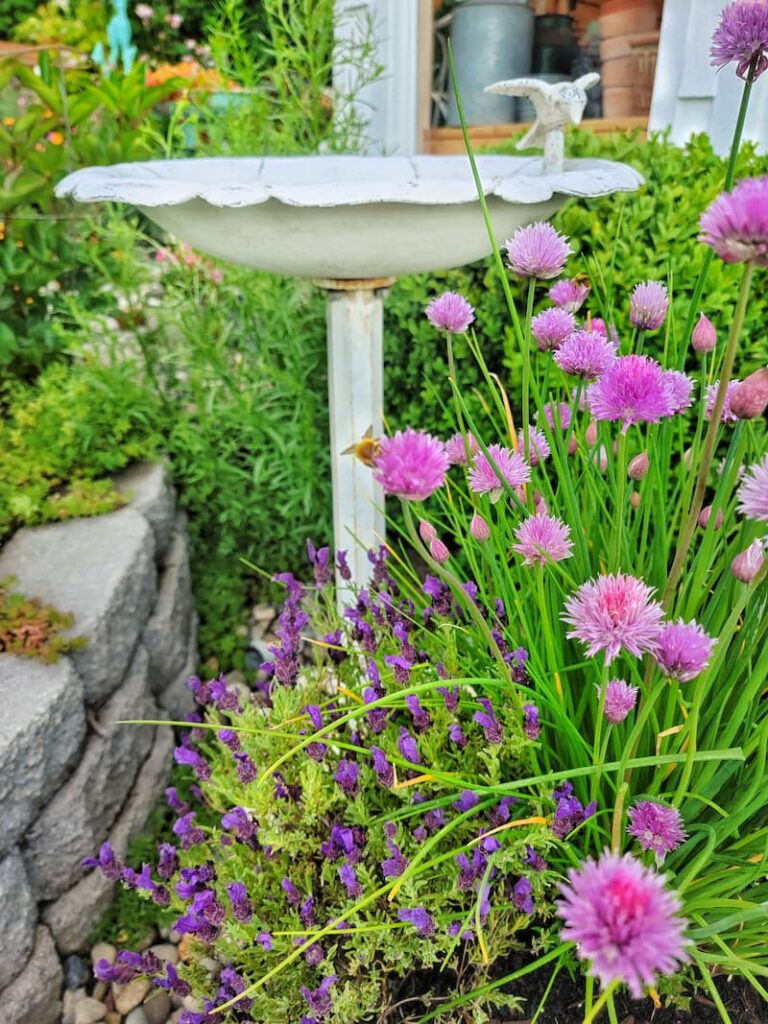Create a Healthy Garden: Your Guide to Flower Companion Planting
Are you ready to take your garden to the next level with the beauty and benefits of flower companion planting? Companion planting is a great way to improve your garden’s overall health and vibrancy while creating a pretty outdoor gardening space.
It took me years to discover that companion planting was a natural way to attract beneficial insects and repel pests in my garden. All it took was growing certain plants next to each other. The best part was that this gardening method was easy and impacted my garden’s health.
In this blog post, I share the basics of flower companion planting, how it can improve your garden’s ecosystem, and some of the best flower pairings to get you started.
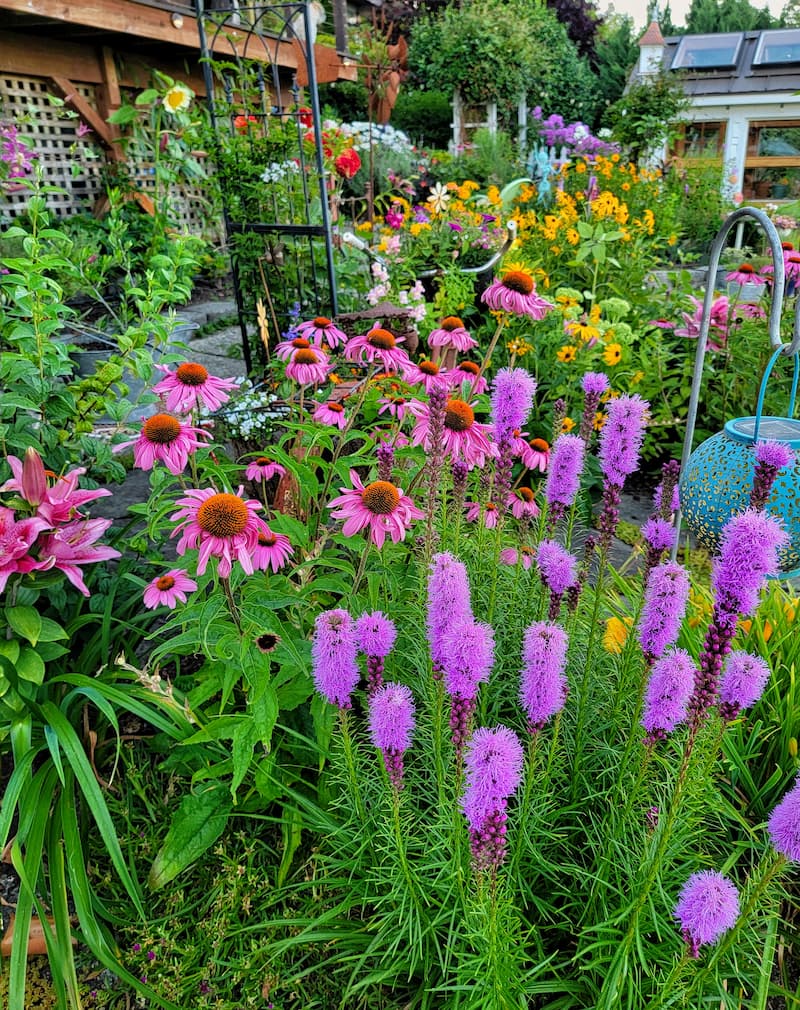
As an Amazon affiliate, I earn a commission from qualifying purchases at no additional cost to you. My blog also features other affiliate links for your convenience. Click here to read my privacy policy.
The Basics of Flower Companion Planting
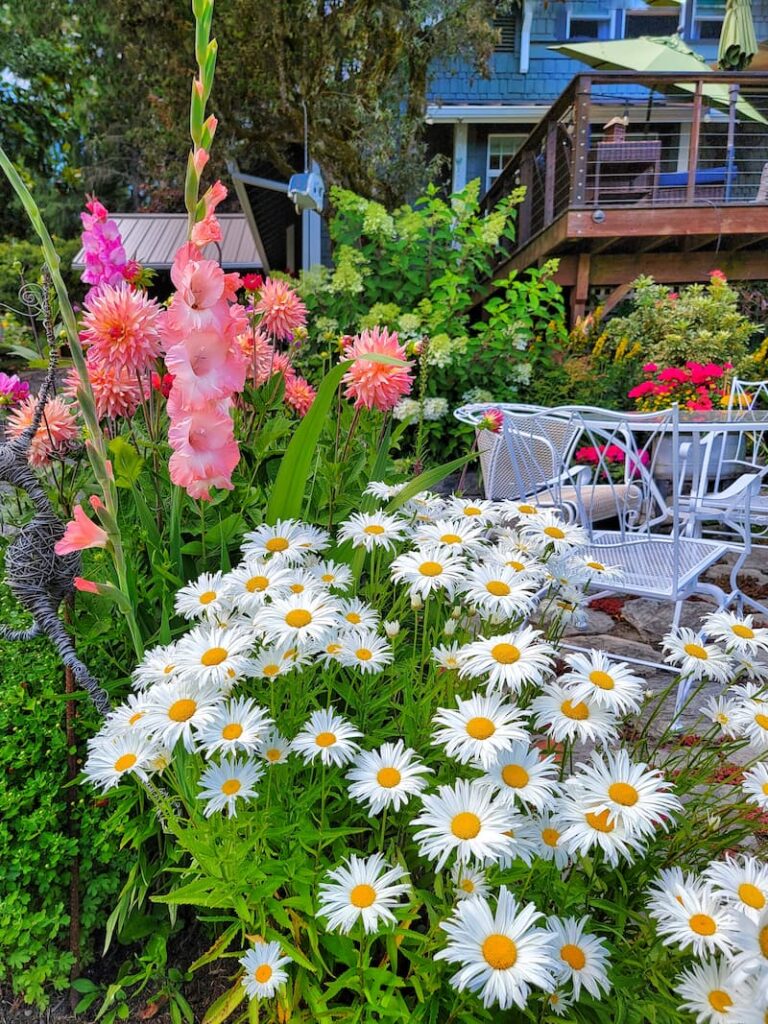
By selecting the proper flower companions, you can create a balanced and thriving garden setting that supports the growth of all your plants.
What is Flower Companion Planting?
Flower companion planting is all about pairing flowers that help each other thrive. Some flowers attract pollinators, while others keep pests away or improve the soil—working together to create a healthier, more beautiful garden.
By choosing the right combinations, you can make your garden more productive and low-maintenance. Some flowers release scents that naturally repel pests, while others draw in helpful insects like bees and butterflies. Plus, planting flowers with similar sunlight, water, and soil needs makes caring for them so much easier!
When planning your garden, consider things like bloom times, plant heights, and the amount of space each flower needs. A bit of thoughtful companion planting can go a long way in creating a balanced and gorgeous garden that practically takes care of itself.
Historical Background
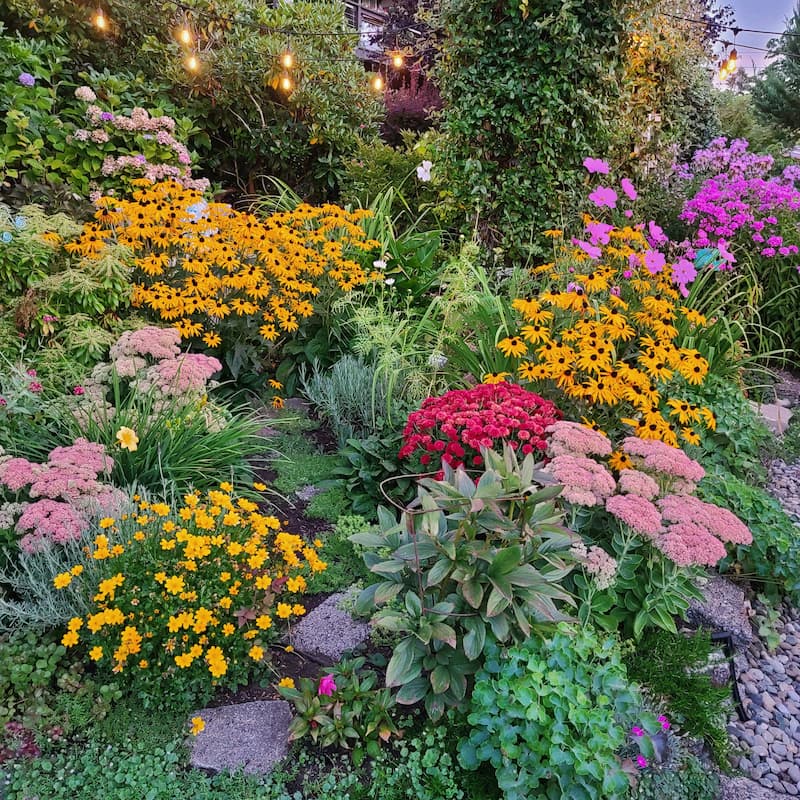
The concept of companion planting has been used for centuries in traditional agricultural practices. One well-known example is the “Three Sisters” method used by Native American tribes, where corn, beans, and squash are planted together to support each other’s growth.
Companion planting vegetables, herbs, and flowers is how the original cottage garden style developed since sectioning off gardens for specific plants was considered a luxury.
Benefits of Companion Planting
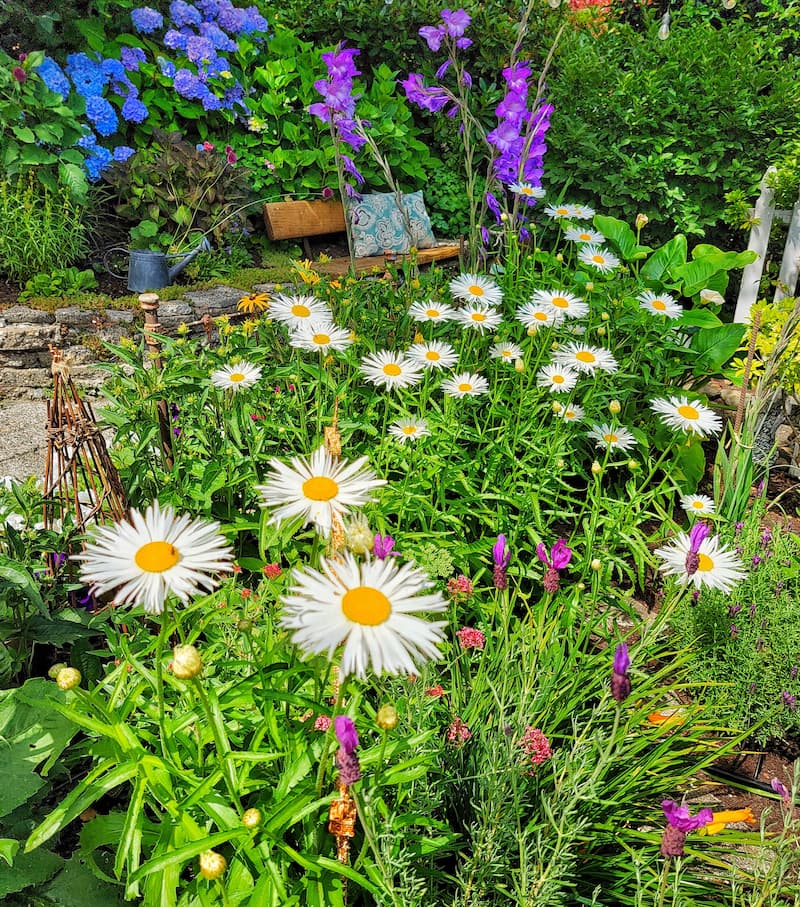
The primary goal of flower companion planting is to pair plants that support each other—whether by keeping pests away, attracting pollinators, or improving soil health.
By making thoughtful choices, you can create a thriving, low-maintenance garden that’s both beautiful and beneficial to the environment.
Natural Pest Control
Flower companion planting is an excellent natural pest control method. Certain flowers attract beneficial insects, such as ladybugs and hoverflies, which prey on harmful pests.
Marigolds and nasturtiums deter nematodes and aphids, respectively, while lavender repels mosquitoes and ants.
This natural way of controlling pests reduces the need for chemical pesticides, creating a healthier organic garden environment. Mixing a variety of flowers can confuse pests and attract predators, maintaining a natural balance in your garden.
Biodiversity
Different flowers attract beneficial insects, birds, and other wildlife, creating a balanced ecosystem. Pollinator-friendly flowers like bee balm and echinacea support bees and butterflies, ensuring plant reproduction and a bountiful harvest.
Diverse plant life improves soil health and reduces pest and disease spread. For a vibrant, biodiverse garden, incorporate native flowers and a mix of plant heights.
Enhanced Growth
Flowers like marigolds improve soil health, while nitrogen-fixing plants such as sweet peas enrich the soil for neighboring plants.
Pollinator-attracting flowers ensure better fruit and vegetable harvests. Taller flowers can create beneficial microclimates, providing shade and reducing water evaporation.
Some flowering plants even release growth-stimulating biochemicals. Add marigolds, sweet peas, bee balm, sunflowers, and borage to encourage vigorous growth in your garden.
Increased Pollination

Flower companion planting significantly boosts pollination.
Flowers like bee balm, lavender, and coneflowers attract beneficial pollinators like bees, butterflies, and hummingbirds, essential for pollinating vegetables and fruits.
This leads to higher harvests and better-quality produce. Plant various cut flowers that bloom throughout the season, such as zinnias, cosmos, and sunflowers, to provide a continuous nectar source. Strategically place flowers to create pathways that guide a range of pollinators through your garden.
Nutrient Management
Nitrogen-fixing flowers like sweet peas enrich the soil for vegetables like tomatoes and corn.
Marigolds suppress harmful nematodes and add organic matter, while borage improves soil structure and attracts beneficial insects.
These methods lead to healthier, more productive plants.
Aesthetic Appeal
A diverse mix of flowers in your garden beds can create a beautiful and harmonious garden space by adding vibrant colors, diverse textures, and sweet scents.
Great companion plants like marigolds, lavender, and sunflowers create a visually gorgeous landscape while supporting the health of your vegetables and herbs.
This not only makes your garden more beautiful but also more enjoyable to spend time in.
Things to Consider When Choosing Companion Flowers
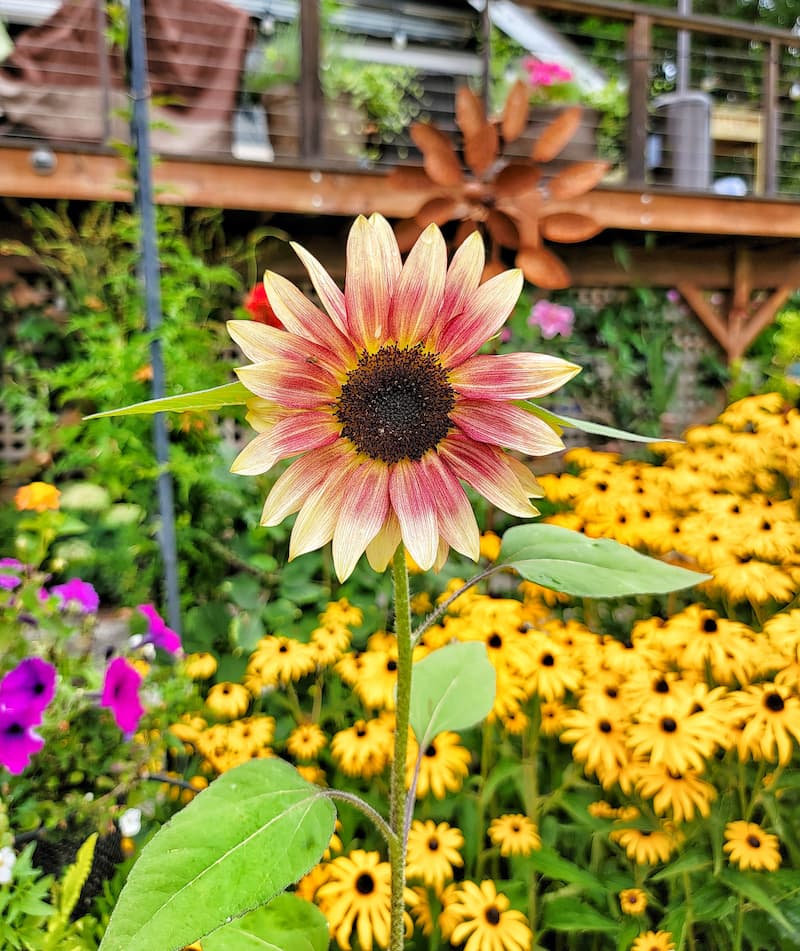
When selecting companion flowers for your garden, it’s important to consider several factors to ensure they thrive together and create a balanced, vibrant display.
Complementary Colors
Choosing flowers with complementary colors can improve the visual charm of your garden. Complementary colors are opposite on the color wheel and, when paired, create a striking contrast that can make your garden pop. Here are some examples:
Mixing different shades and tones within these complementary pairs can add depth and interest to your garden’s overall aesthetic.
Light & Soil Needs
Group plants with similar sunlight needs together. For instance, sun-loving plants such as zinnias and sunflowers should be planted in the same area, while shade-tolerant flowers like hostas and astilbes can share a more sheltered spot.
Match flowers based on their soil type preferences. Some flowers thrive in well-drained, sandy soils, while others prefer rich, loamy soils. Test your garden soil and choose companions that flourish in the same conditions.
Bloom Time
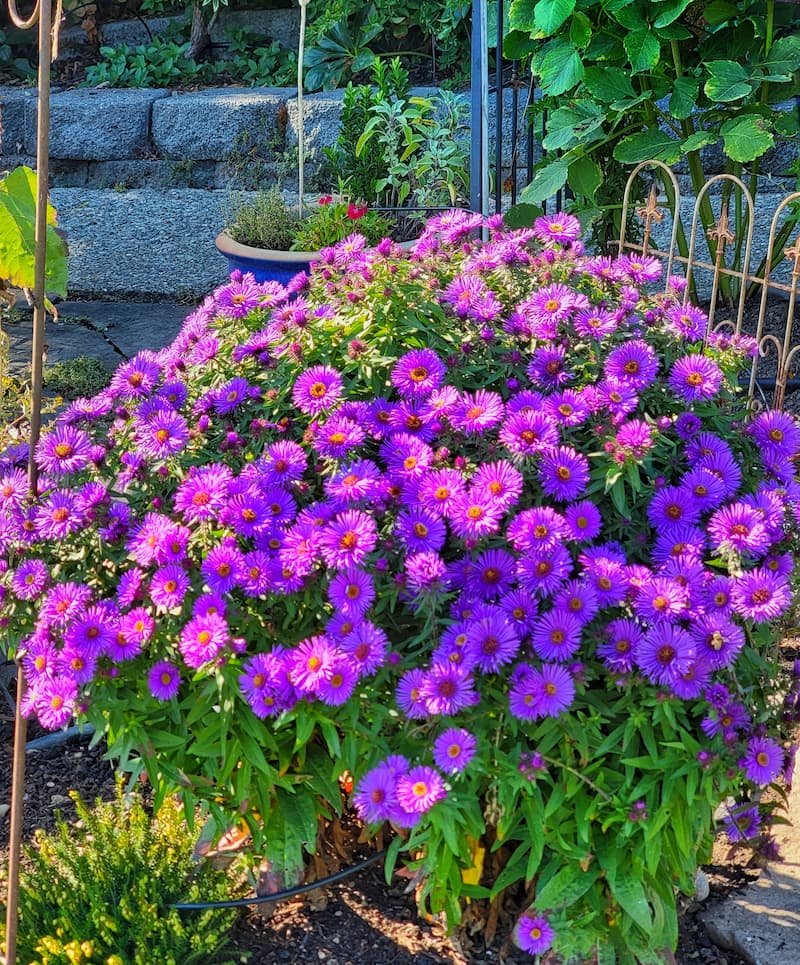
By staggering bloom times, you can maintain a vibrant garden all season long and provide continuous food sources for pollinators.
Early Bloomers
Choose flowers like crocuses and tulips that bloom in early spring to kickstart your garden’s display.
Mid-Season Bloomers
For ongoing color, include flowers such as peonies and irises that peak in late spring to early summer.
Late Bloomers
Select flowers like asters and chrysanthemums that bloom in late summer to fall, ensuring your garden remains colorful until the first frost.
Annual vs Perennial

Understanding the difference between annual and perennial flowers will help you plan your garden’s layout and maintenance.
Annual Flowers
These flowers complete their life cycle in one growing season. They need to be replanted each year but often provide a long, prolific bloom period.
Examples include marigolds, petunias, and zinnias. Annuals are great for filling in gaps and adding seasonal color.
Perennial Flowers
Perennials return year after year, gradually spreading and becoming more vital. While they may have a shorter bloom period than annuals, they provide long-term structure and reliability in the garden.
Examples include peonies, lavender, and coneflowers.
14 Best Flowers for Companion Planting & How They Help
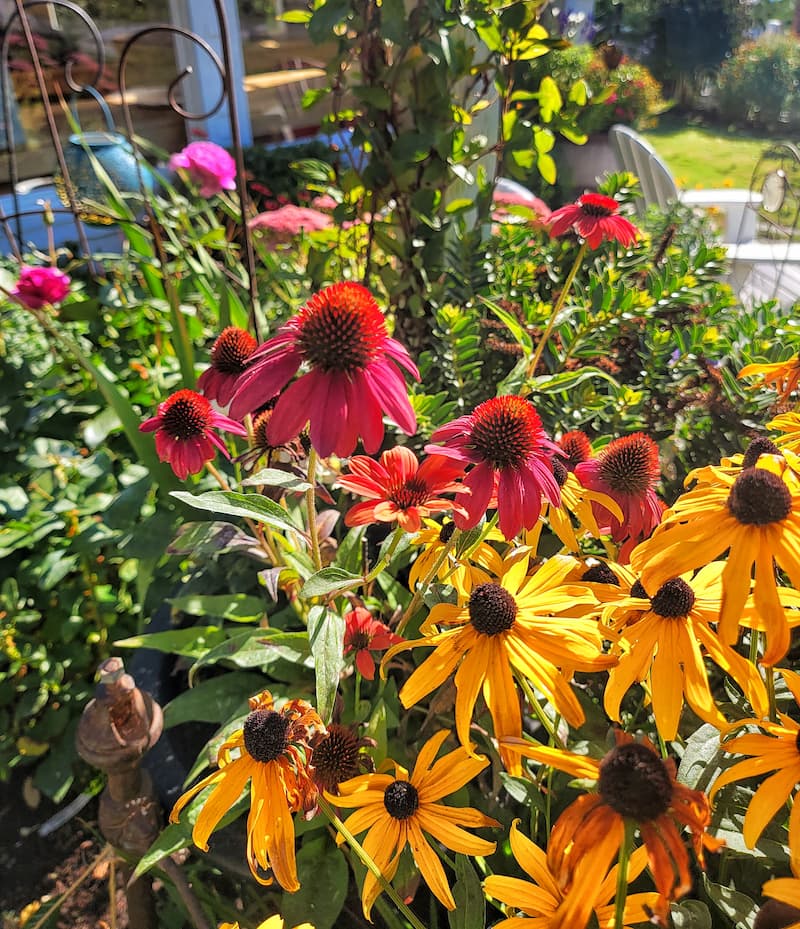
Companion planting with flowers is a wonderful strategy for improving your garden’s overall health and productivity. Different flowers offer unique benefits, from enhancing soil health to controlling garden pests.
Here are some of the best companion planting flowers and how they help your garden thrive.
Companion Planting for Soil Health
Specific plants can significantly improve soil quality, promoting healthier growth for all nearby plants.
Marigolds
Known for their ability to suppress nematodes, marigolds can help keep soil-borne pests in check, improving soil health.
Borage
Borage adds trace minerals to the soil and helps improve soil structure with its deep roots.
Comfrey
This deep-rooted plant draws nutrients from the soil, which can be released into the upper soil layers as the leaves decompose, enriching the soil.
Companion Planting for Pest Control
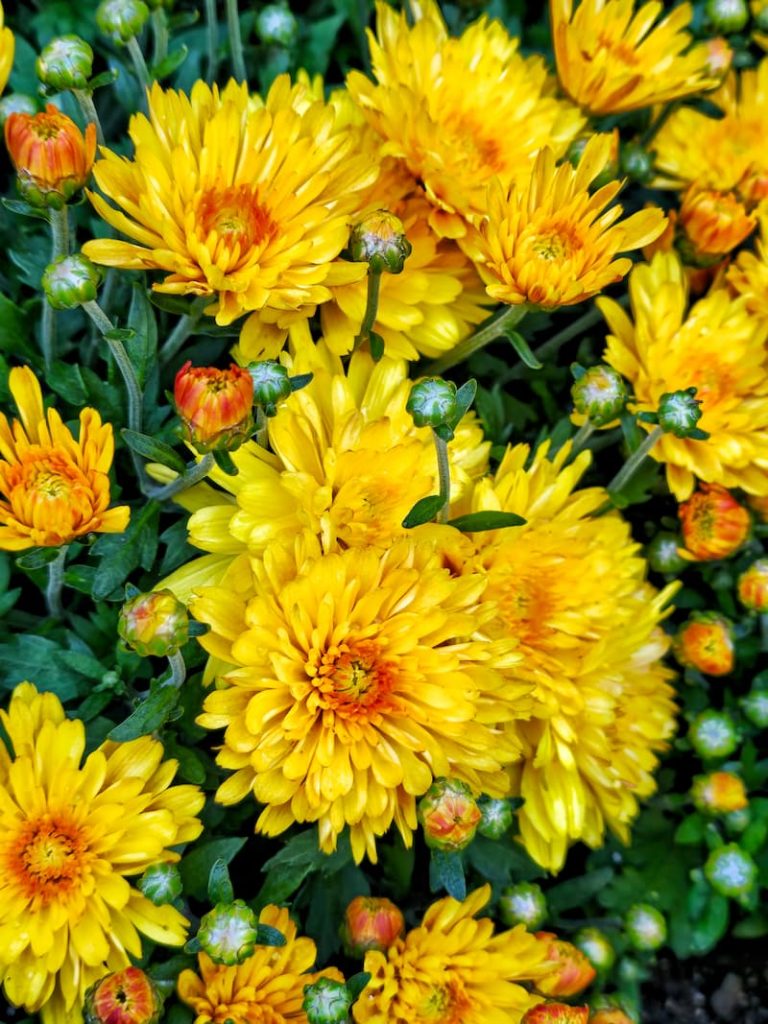
Nasturtiums
Here are the best plants with natural properties that repel harmful insects, reducing the need for chemical pesticides.
These vibrant flowers are a great choice to repel aphids, whiteflies, and other pests, making them excellent companions for vegetables like tomatoes and cucumbers.
Chrysanthemums
These flowers contain pyrethrum, a natural insect repellent effective against ants and beetles.
Lavender
The strong scent of lavender deters mosquitoes, fleas, and moths, protecting nearby plants from these pests.
Companion Plants as Trap Crops
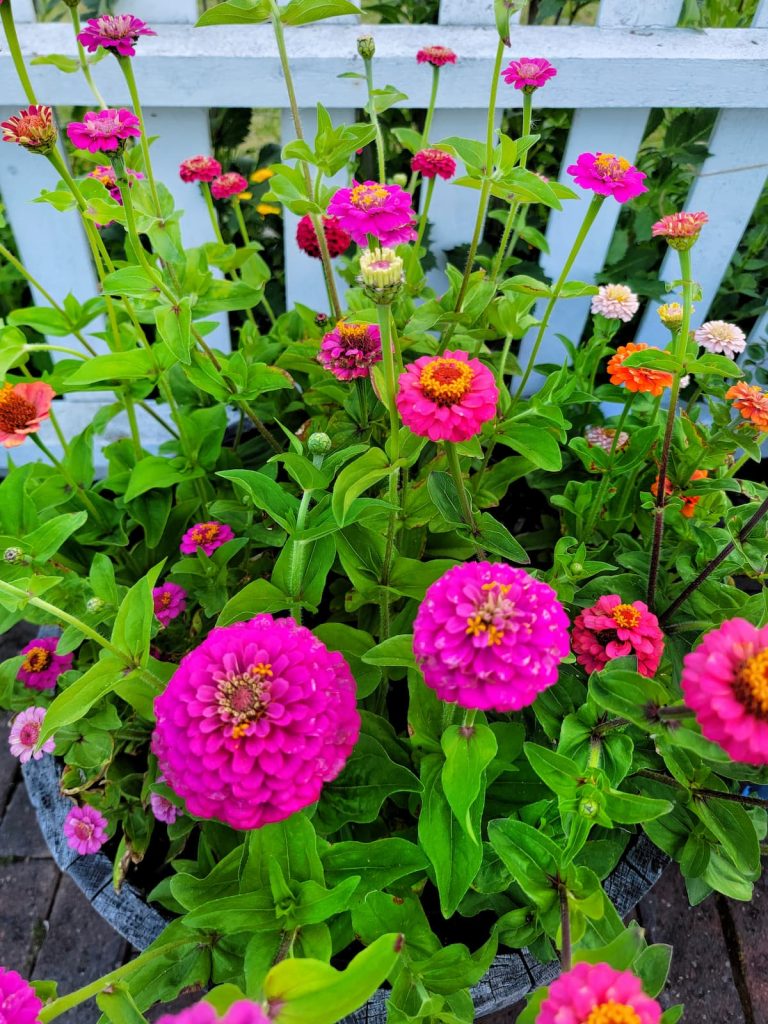
The most famous flower trap crop is probably nasturtiums, which attract aphids. Nicotiana is also a viable trap plant. Trap crops attract pests away from valuable plants, protecting your main crops.
Nasturtiums
Besides repelling pests, nasturtiums also attract aphids, making them an amazing sacrificial plant for keeping the pests away from other plants and protecting your flower gardens from pest damage.
Zinnias
These flowers can attract Japanese beetles and cucumber beetles, diverting them from more valuable crops like beans and cucumbers.
Sunflowers
Tall sunflowers lure pests such as aphids and serve as a trap crop, keeping them away from more delicate plants in the garden.
Supporting Beneficial Insects
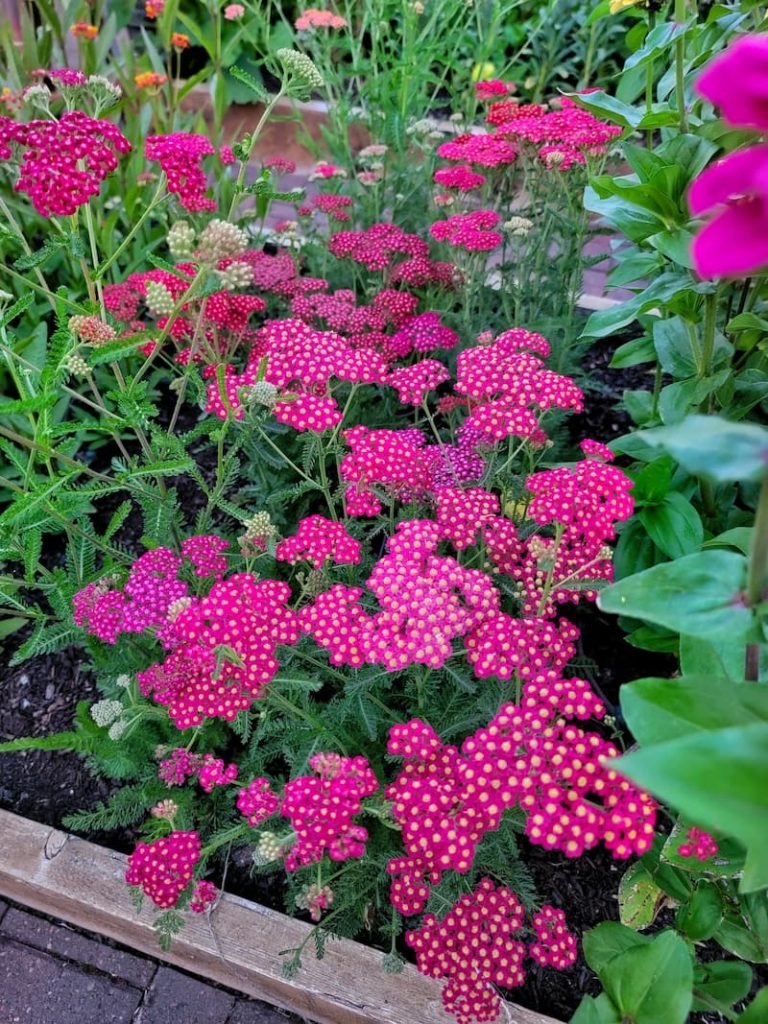
Good companion plants that attract beneficial insects can help control pest populations naturally.
Alyssum
These low-growing flowers attract predatory insects like hoverflies and parasitic wasps, which feed on aphids and other pests.
Yarrow
Yarrow attracts ladybugs, lacewings, and predatory wasps, all of which help manage pest populations in your garden.
Calendula
These flowers draw in beneficial insects like bees and predatory beetles, contributing to a balanced garden ecosystem.
Companion Planting for Light Exposure

Using flowers to manage full sun exposure can benefit sun-sensitive plants and optimize your garden layout. Here are good examples of the best garden flowers to minimize light exposure.
Sunflowers
Tall and sturdy, sunflowers provide shade for more delicate, shade-loving plants, helping to prevent sunburn and excessive heat.
Sweet Alyssum
Sweet alyssum can help shade the soil as a ground cover, reducing evaporation and keeping the soil cooler for nearby plants.
Cosmos
These tall plants can provide partial shade for plants that need protection from intense midday sun.
Companion Planting for Pollinators
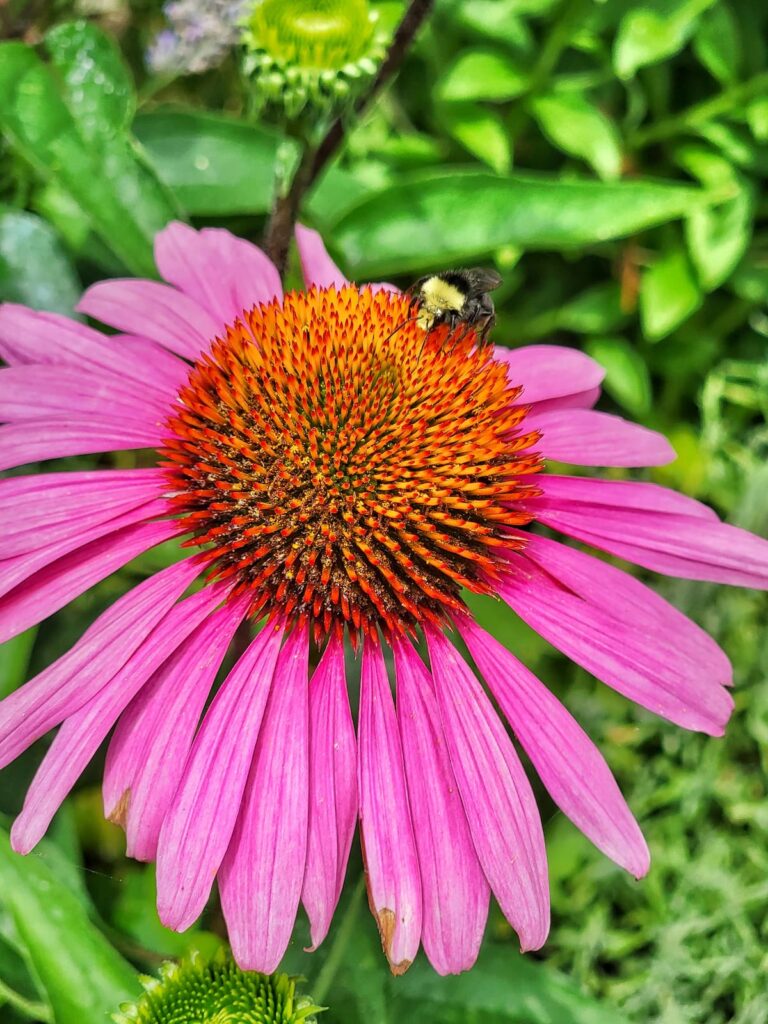
Attracting pollinators is essential for fruit and vegetable production. Here are examples of companion planting for pollinators.
Bee Balm
This flower is highly attractive to bees, butterflies, and hummingbirds, enhancing pollination in your garden.
Echinacea (Coneflower)
Echinacea draws bees and butterflies, ensuring effective pollination for nearby fruit and vegetable plants.
Lavender
Besides its pest-repelling properties, lavender is also a favorite of bees, making it an excellent dual-purpose plant for pollinator support.
7 Good Flower Combinations to Try
Creating a vibrant and healthy garden involves selecting the right flower combinations that complement each other in aesthetics and functionality. Some tried-and-true flower pairings can enhance your garden’s beauty and productivity.
Roses and Lavender
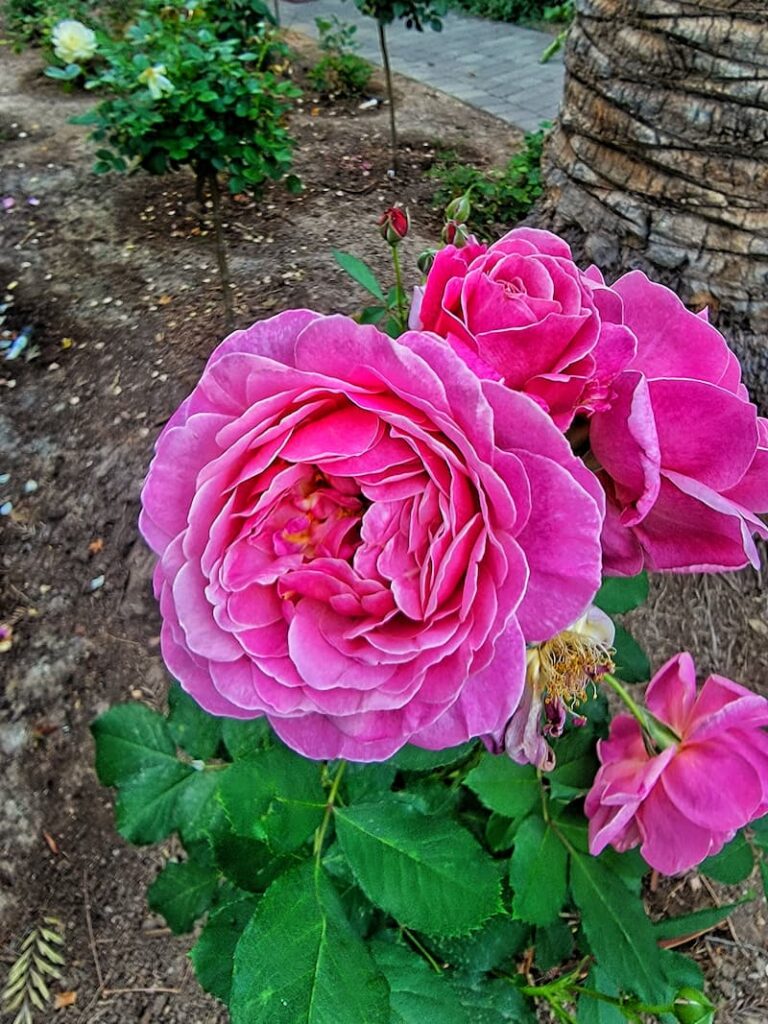
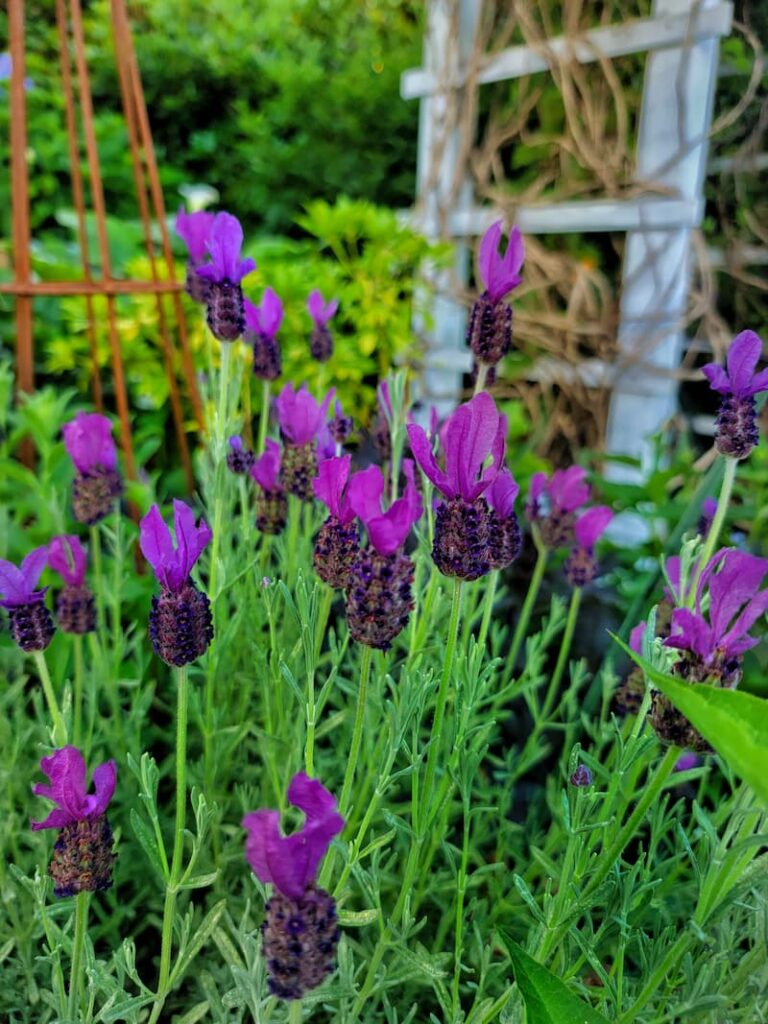
Lavender’s strong scent helps repel aphids and other pests that commonly affect roses. Roses and lavender attract beneficial insects like bees and butterflies, boosting pollination.
The classic combination of roses and lavender contrasts colors and textures, creating a romantic and timeless garden look.
Marigolds and Nasturtiums
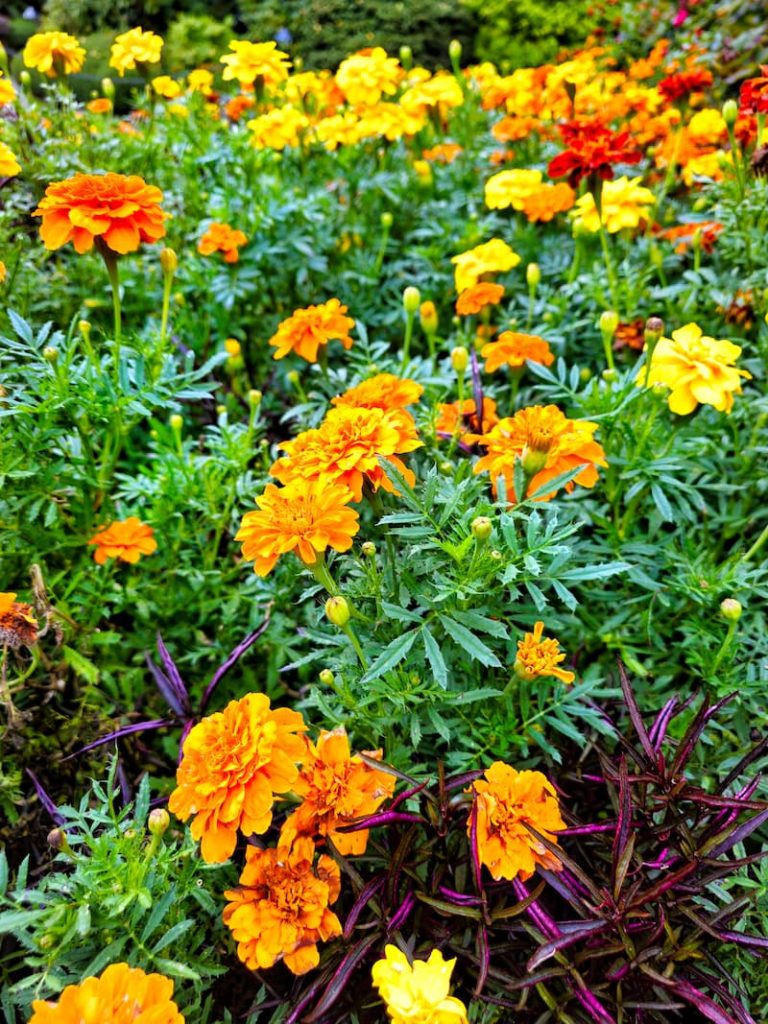
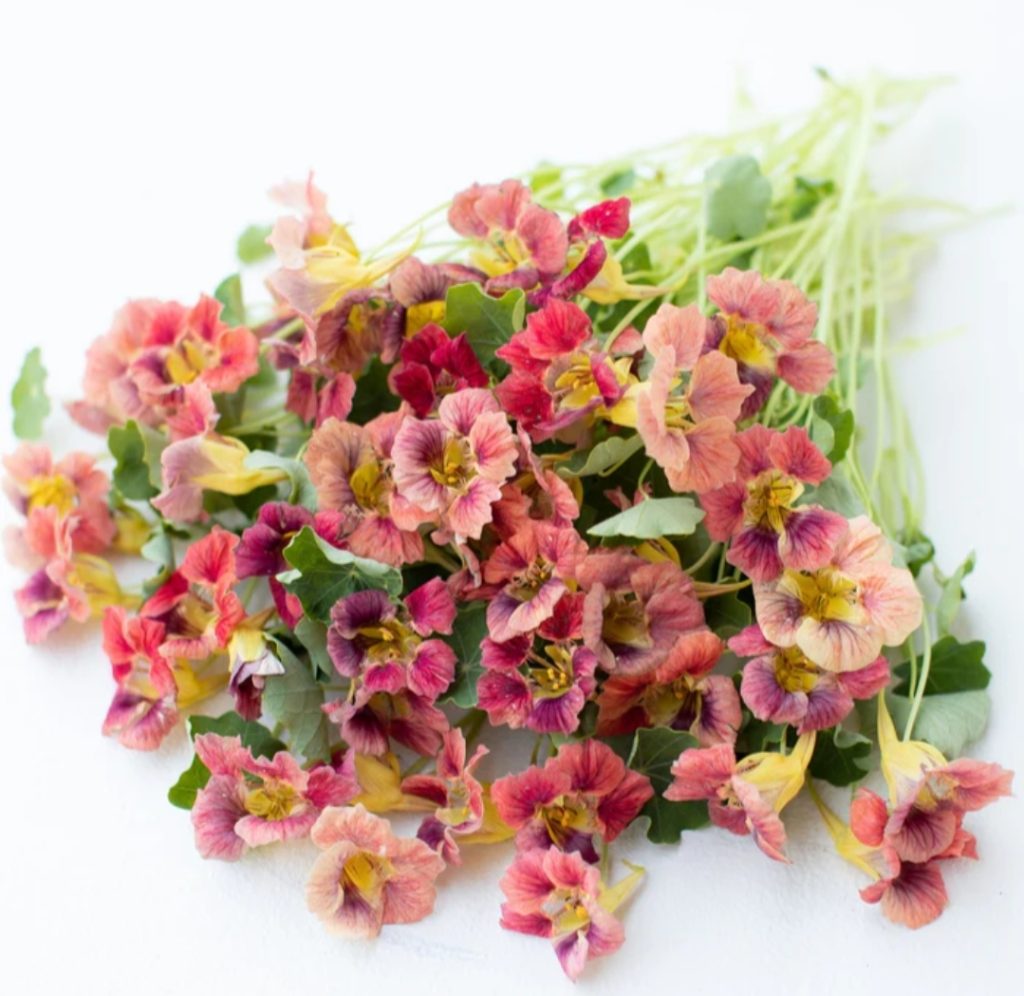
Nasturtiums act as a trap crop for aphids, drawing them away from more vulnerable plants, while marigolds are known for repelling nematodes.
Marigolds can improve soil health, making it more conducive for other plants to thrive. Marigolds and nasturtiums’ bright, cheerful colors create a lively and inviting garden space.
Zinnias and Cosmos
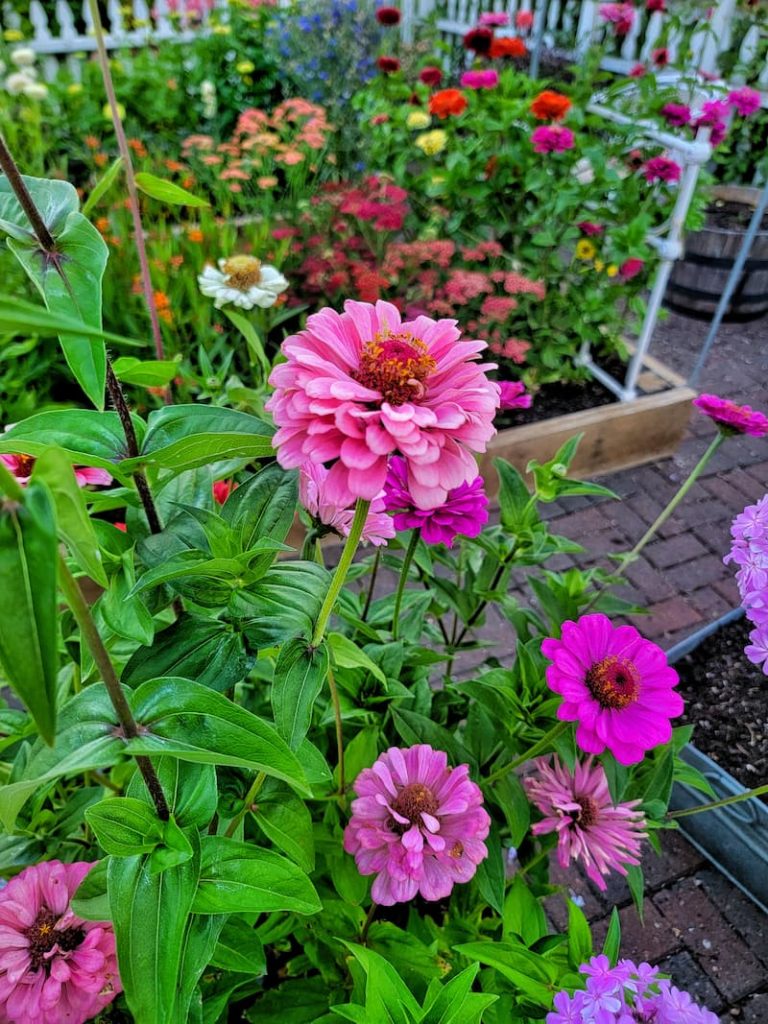
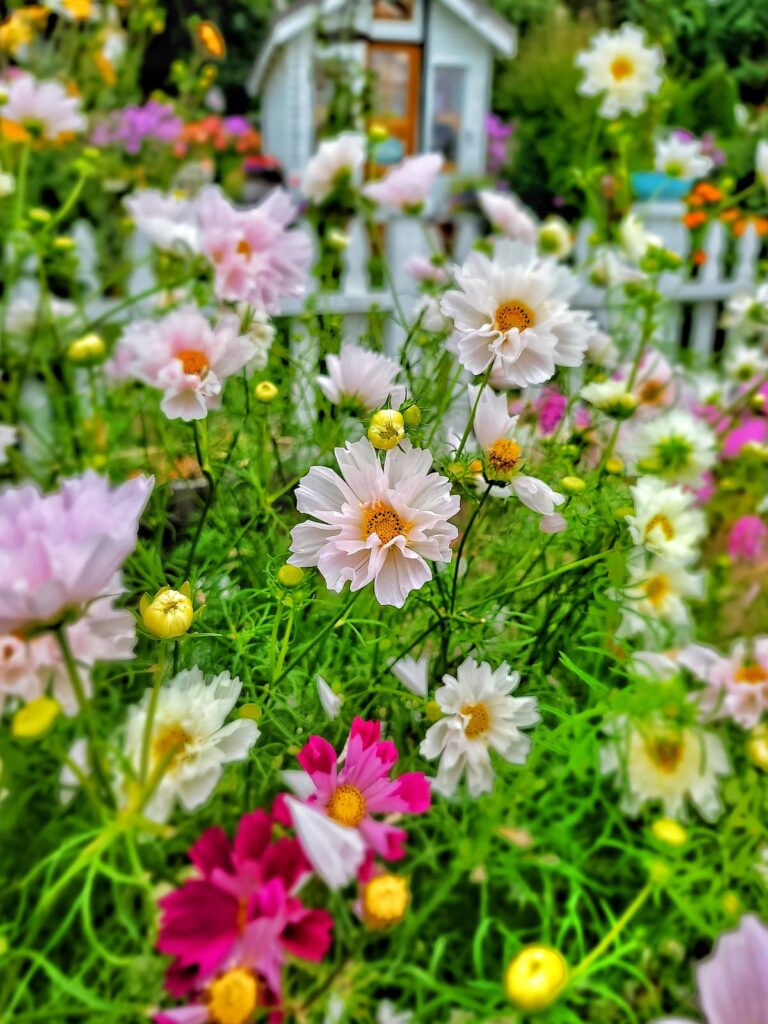
Both zinnias and cosmos are excellent at attracting pollinators like bees and butterflies, which is essential for a productive garden.
Zinnias and cosmos look stunning in flower arrangements and offer long blooming periods, ensuring continuous color throughout the growing season.
Zinnias add structure and height, while cosmos provide a delicate, airy touch, creating a balanced and dynamic garden display.
Sunflowers and Echinacea
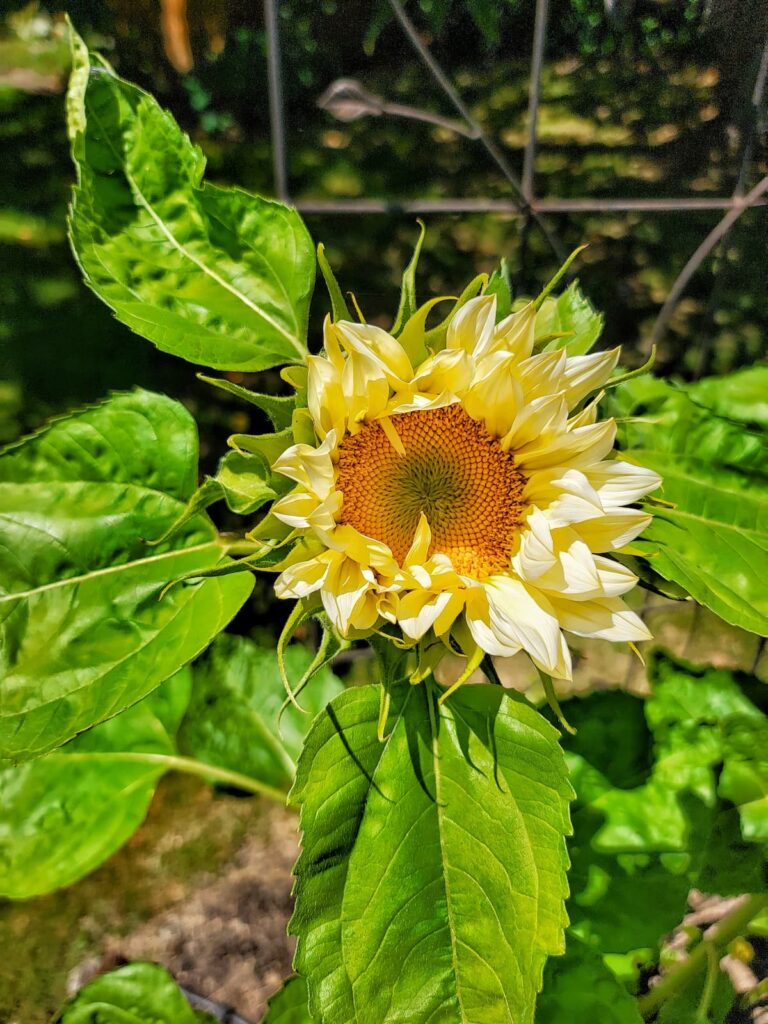
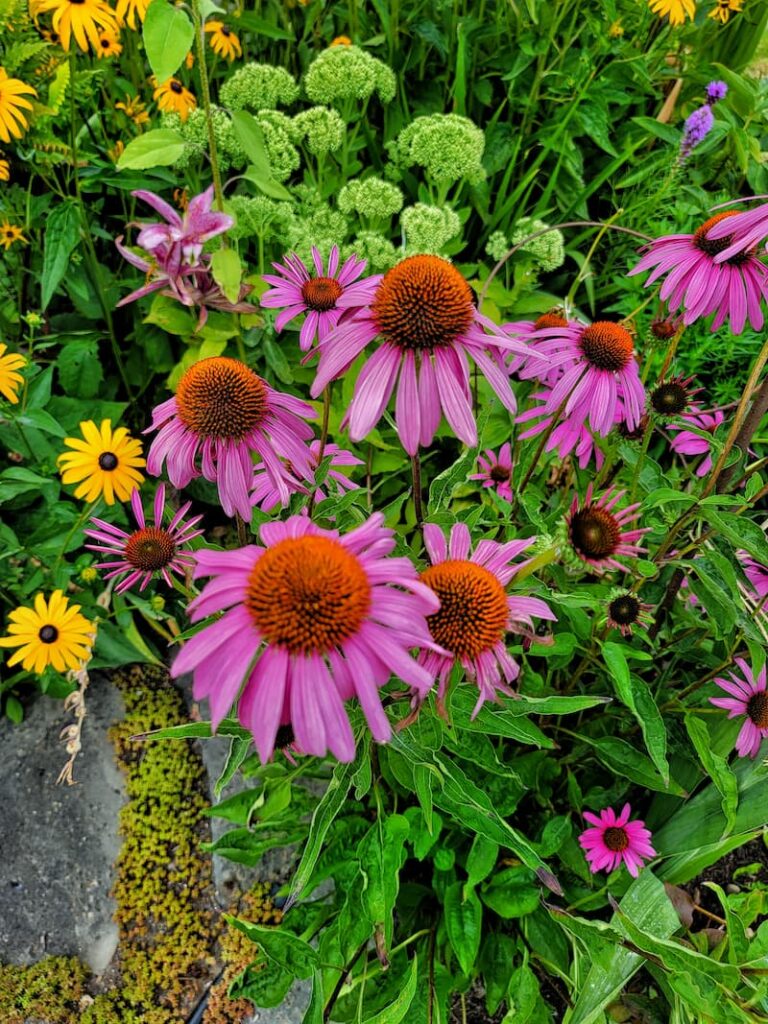
Sunflowers and echinacea attract pollinators, including bees, butterflies, and birds, enhancing pollination for other garden plants.
Echinacea adds organic matter as it decomposes. Sunflowers have deep roots that help break up compacted soil. The combination of tall sunflowers and mid-height echinacea creates a layered look with vibrant colors.
Alyssum and Petunias
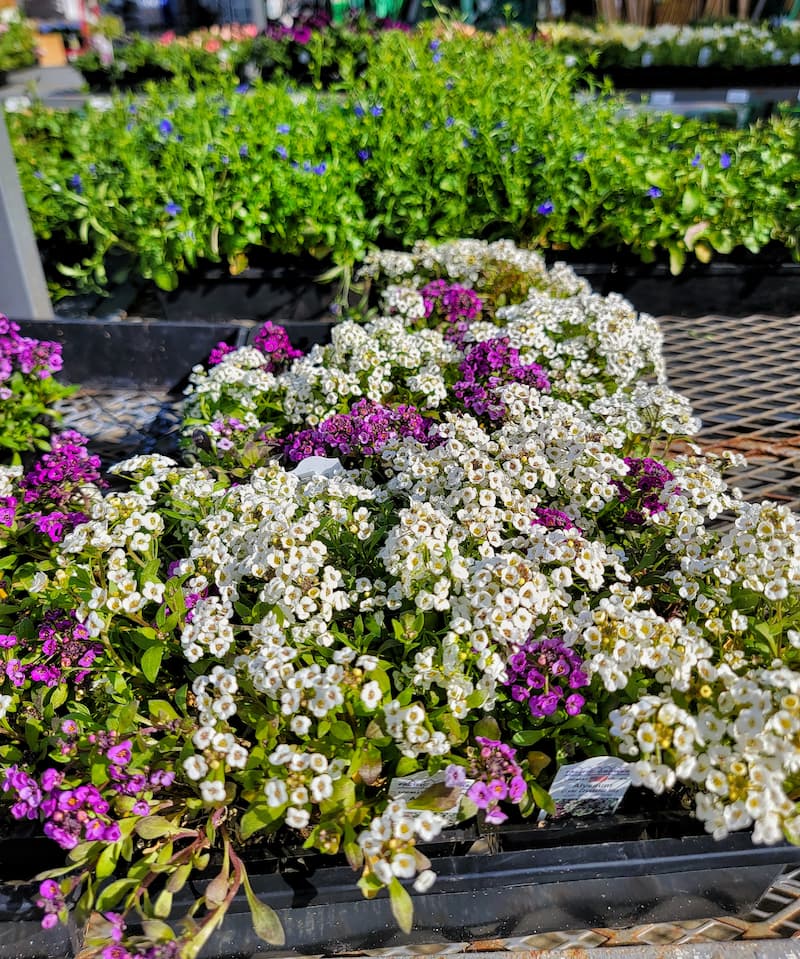
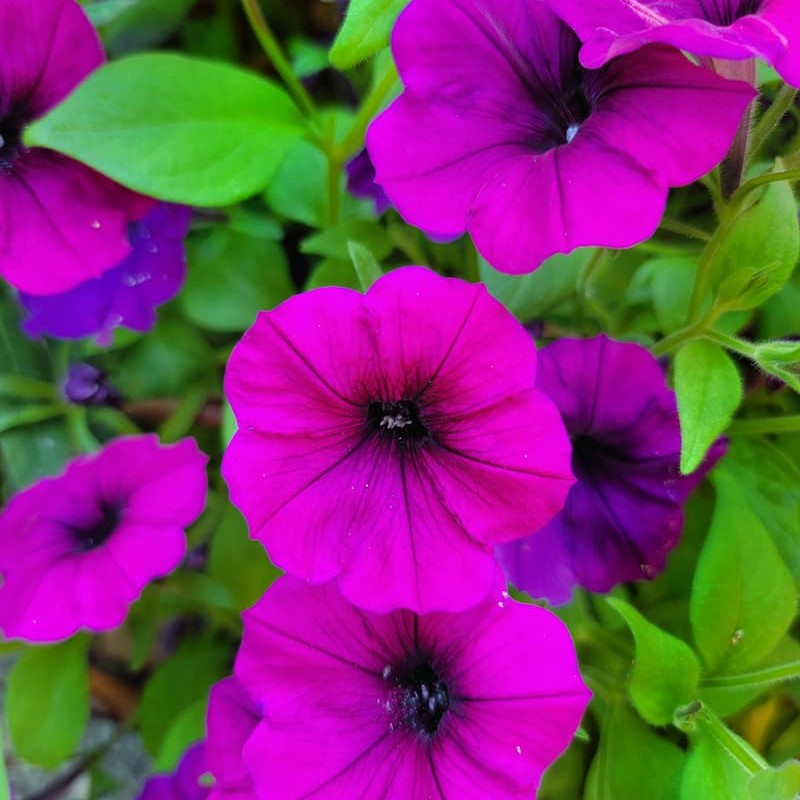
Alyssum attracts beneficial insects like hoverflies and parasitic wasps that prey on garden pests. Its low growth rate helps suppress weeds and retain soil moisture, benefiting nearby petunias.
The soft, trailing nature of alyssum paired with the bold, bushy petunias results in a cohesive and pretty garden display.
Calendula and Tomatoes
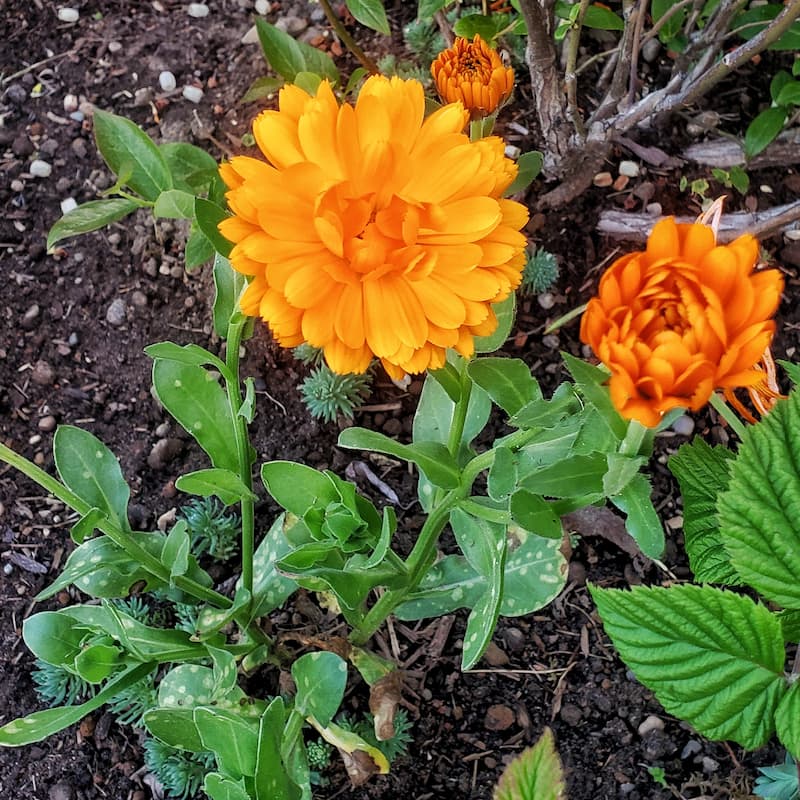
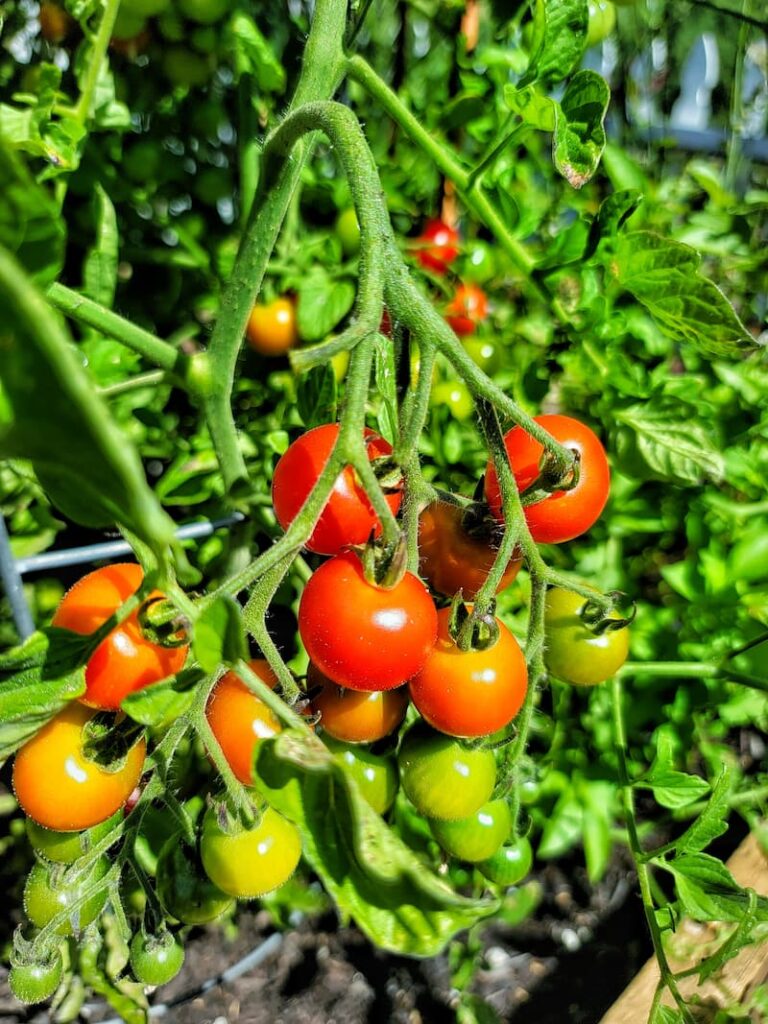
Calendula’s strong scent deters pests commonly targeting tomatoes, such as aphids and tomato hornworms. It helps improve soil health and attract pollinators, supporting the overall growth of tomato plants.
Calendula’s bright orange and yellow flowers contrast tomato plants’ lush green foliage and red fruits.
Bee Balm and Black-Eyed Susan
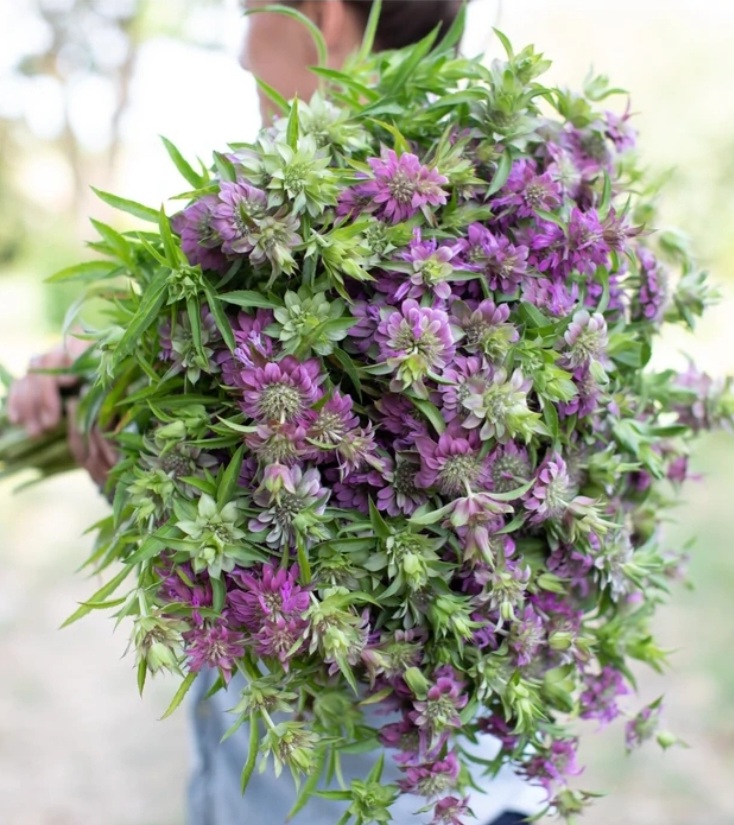
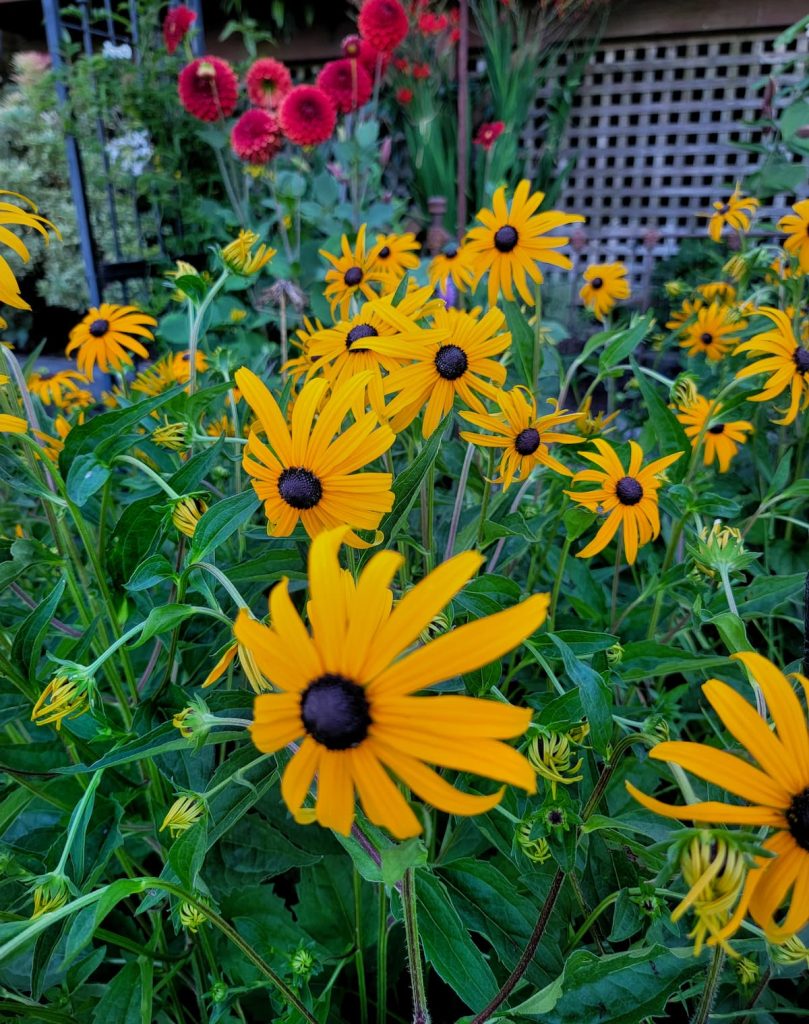
Both bee balm and black-eyed Susan are magnets for bees, butterflies, and hummingbirds, promoting healthy pollination in the garden.
These plants are generally disease-resistant and can help reduce the spread of garden diseases. The upright stems of bee balm combined with the sunny, cheerful blooms of black-eyed Susans create a vibrant and eye-catching garden view.
Companion Planting Flowers and Vegetables
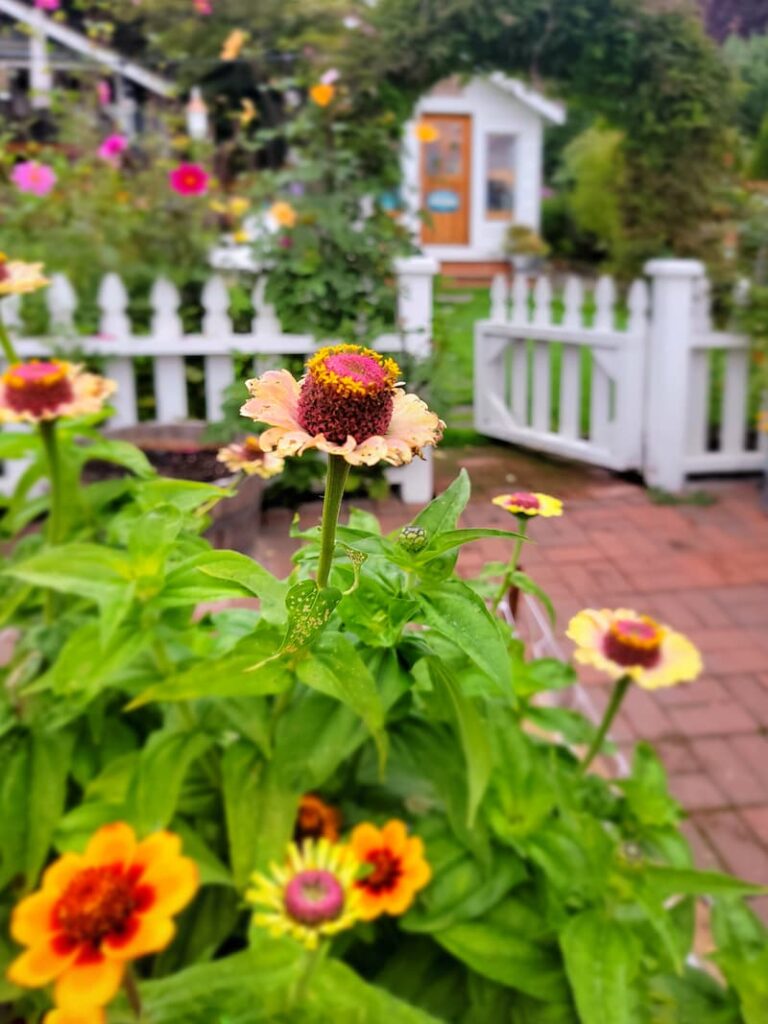
Combining flowers and vegetables in your garden enhances its beauty and promotes a healthier and more productive growing environment.
Companion planting provides natural benefits that flowers can pass on to your vegetable garden, such as pest control, improved pollination, and better soil health. Here are some of the best flower and vegetable pairings for your garden.
Marigolds and Tomatoes
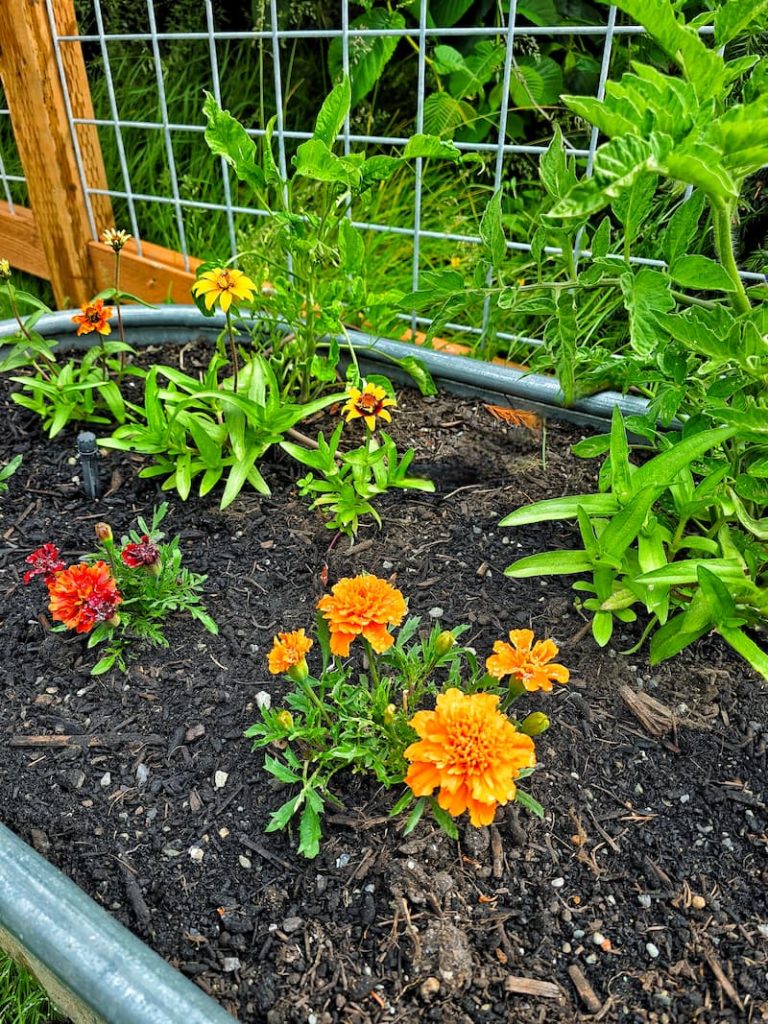
Marigolds release compounds that repel nematodes, aphids, and whiteflies, protecting tomato plants from these common pests.
They also improve soil health by deterring harmful nematodes and attracting beneficial insects that prey on pests.
Nasturtiums and Cucumbers
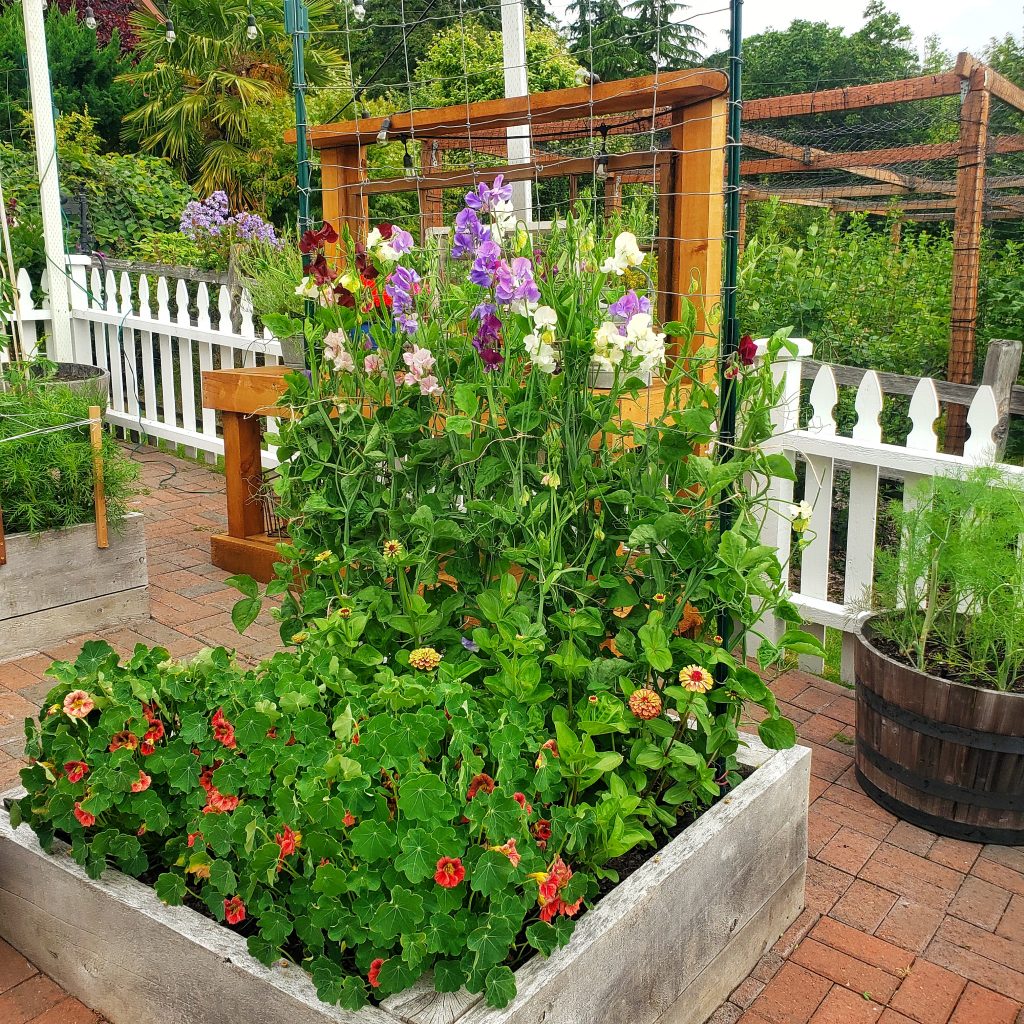
Nasturtiums act as trap crops, luring aphids and other pests away from cucumber plants. Both plants attract pollinators, ensuring a better fruit set for cucumbers.
Nasturtiums spread out as a ground cover, helping to suppress weeds and retain soil moisture for cucumber plants.
Calendula and Carrots

Calendula deters aphids, nematodes, and other pests that can damage carrot plants. As this plant decomposes, it enriches the soil with organic matter, benefiting carrot growth.
The bright orange and yellow flowers of calendula provide a vibrant contrast to the green, feathery foliage of carrots.
Borage and Strawberries
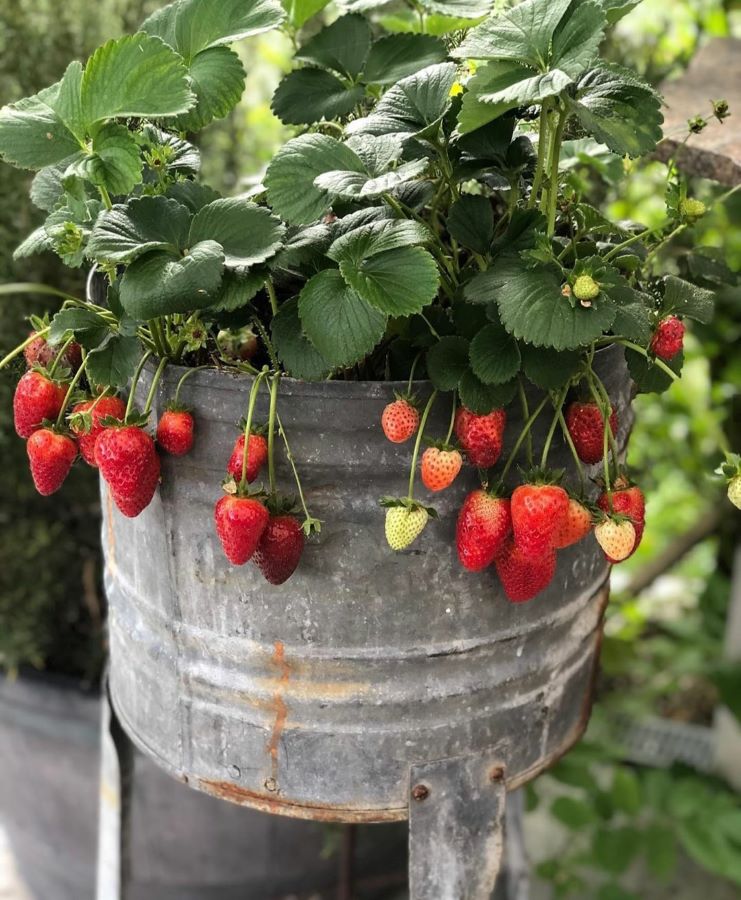
Borage helps repel pests such as tomato hornworms and cabbage moths, which can also affect strawberries. It attracts bees and other pollinators, increasing the pollination and yield of strawberry plants.
Borage improves soil health by adding trace minerals and enriching the soil as it decomposes.
Sunflowers and Corn
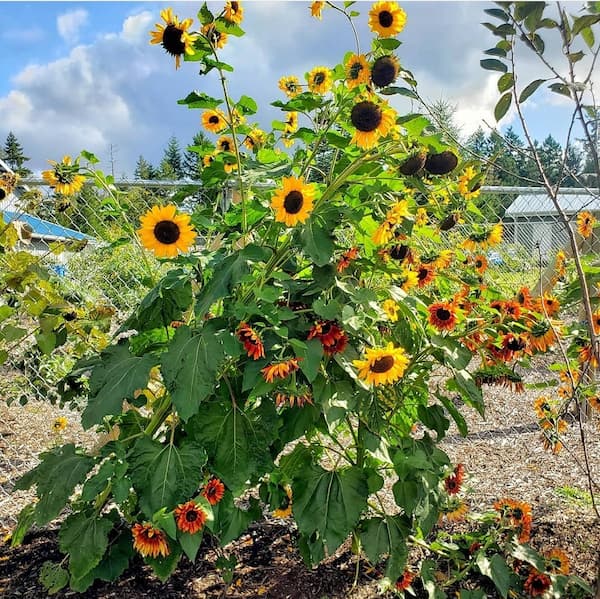
Sunflowers can act as a trap crop for aphids, drawing them away from corn plants. They provide a natural trellis for climbing beans, often grown alongside corn in the traditional “Three Sisters” planting method.
The tall, sturdy stalks of sunflowers add vertical interest and structure to a corn patch.
Alyssum and Lettuce

Alyssum attracts beneficial insects like hoverflies and parasitic wasps, which help control aphids and other pests on lettuce. It acts as a living mulch, reducing weed growth and helping to retain soil moisture for lettuce plants.
The low-growing, delicate flowers of alyssum complement the lush green leaves of lettuce, creating a pleasing visual effect.
Lavender and Eggplants
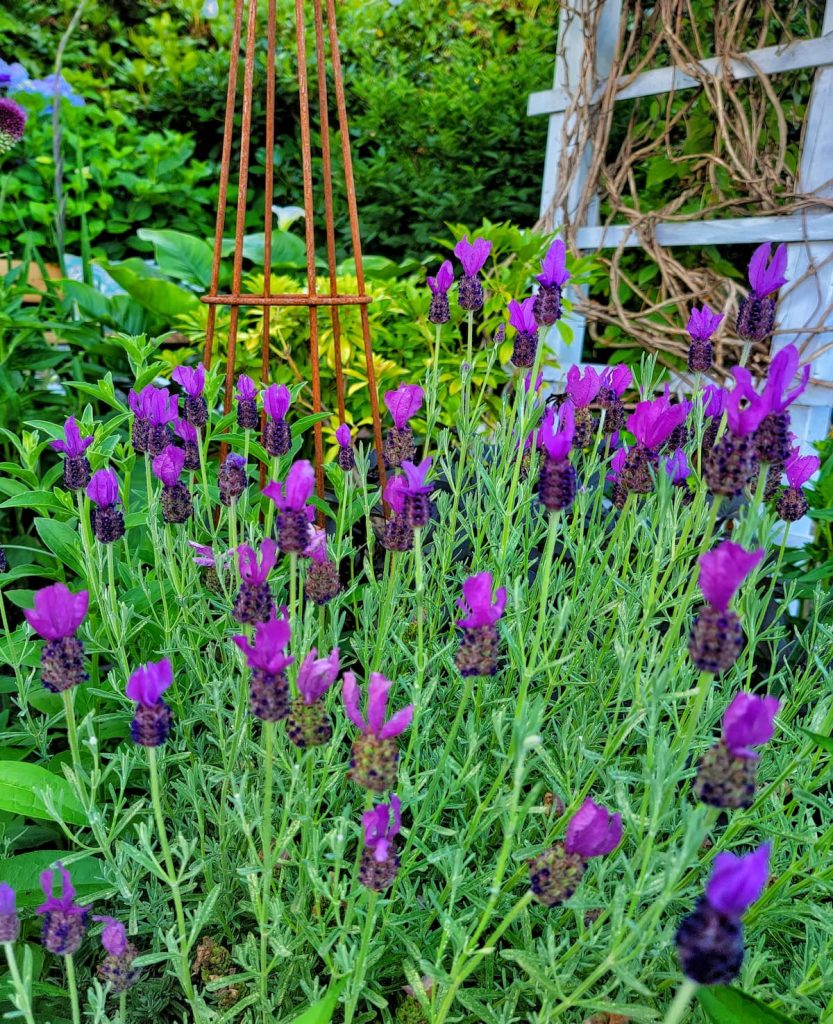
Lavender’s fragrant flowers repel pests such as moths, fleas, and beetles that can harm eggplants. It also attracts bees and other pollinators, which can improve eggplants’ fruit set and harvest.
Lavender’s purple flowers harmonize beautifully with eggplants’ dark, glossy fruits, adding color and fragrance to the garden.
Other Companion Planting Top Tips for the Vegetable Garden
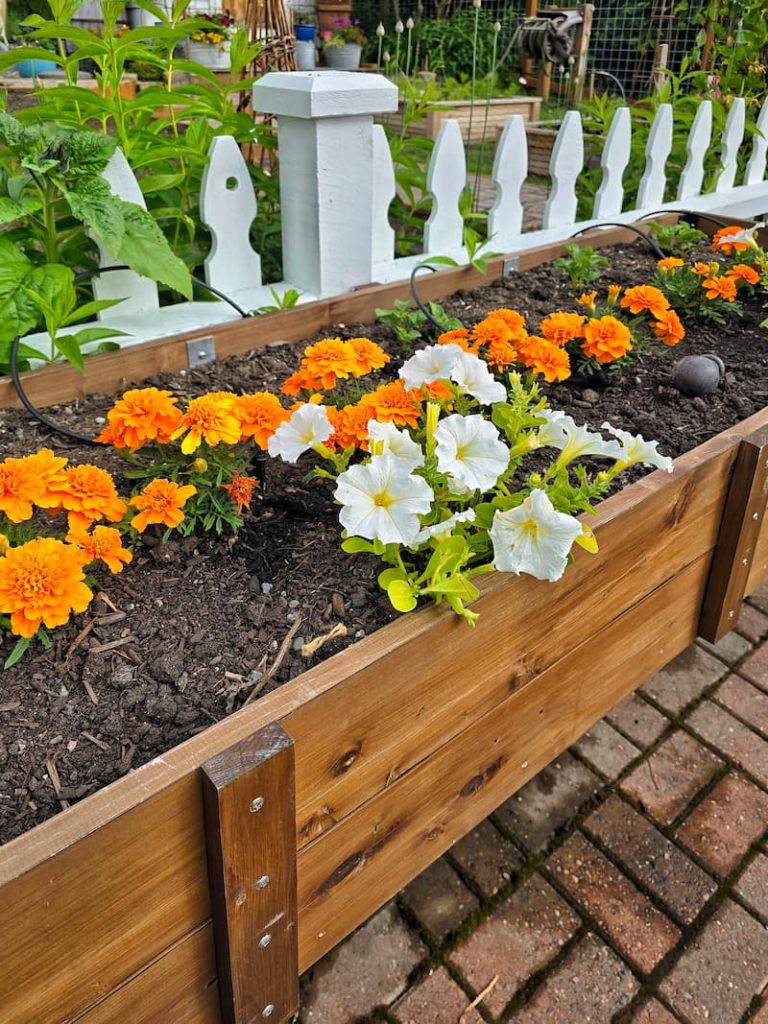
Companion Planting Herbs and Flowers
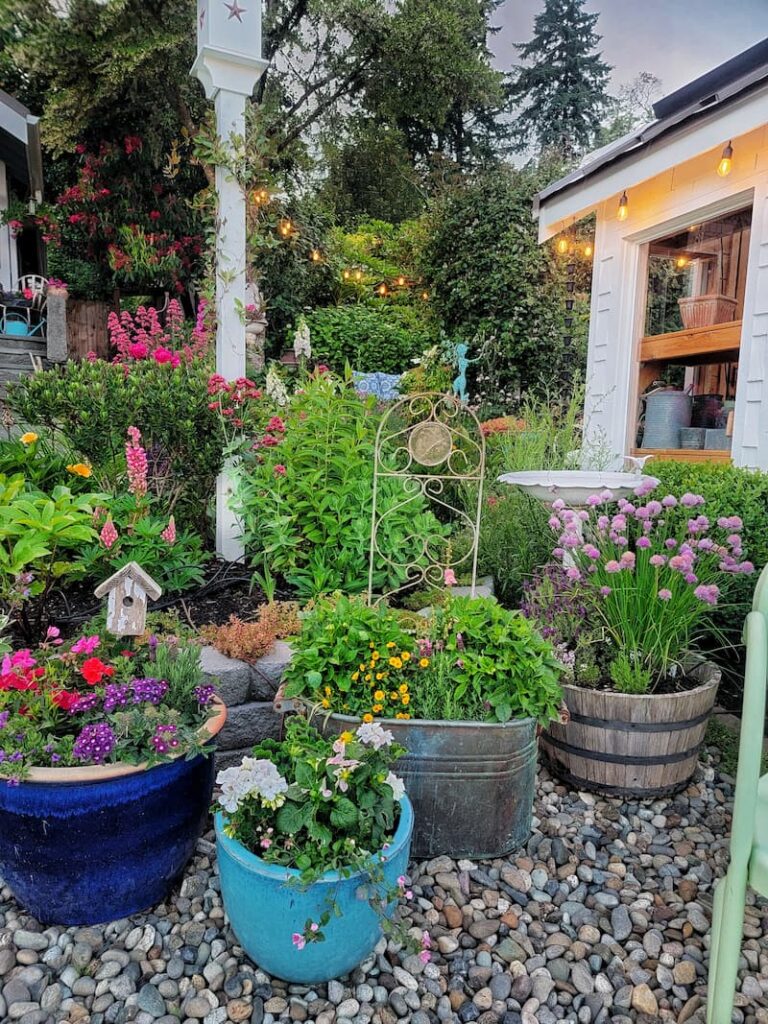
Combining herbs and flowers in your garden adds beauty and creates a more balanced and healthy ecosystem. Herbs can enhance flower growth through pest control, attract beneficial insects, and improve soil health.
Here are some effective herb and flower pairings to consider for your garden.
Basil and Marigolds
Both these plants repel a variety of pests. Basil deters mosquitoes and flies, while marigolds keep nematodes and aphids at bay.
Both plants attract beneficial insects like bees, which aid in pollination.
The strong scents of basil and marigolds create a delightful, aromatic garden environment, enhancing the sensory experience.
Chives and Roses
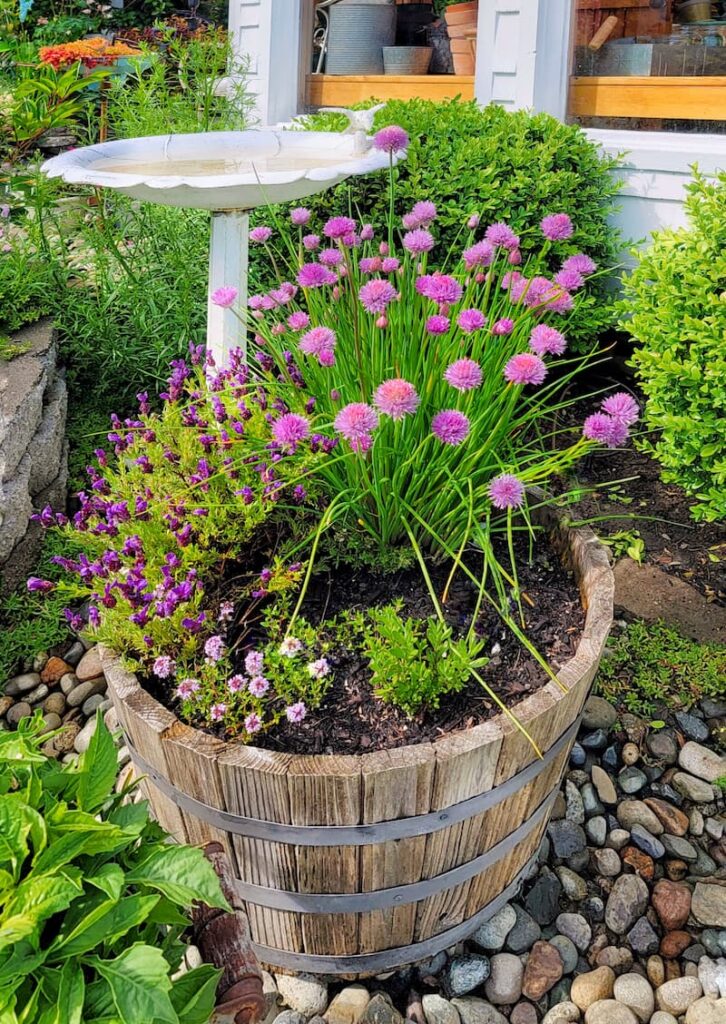
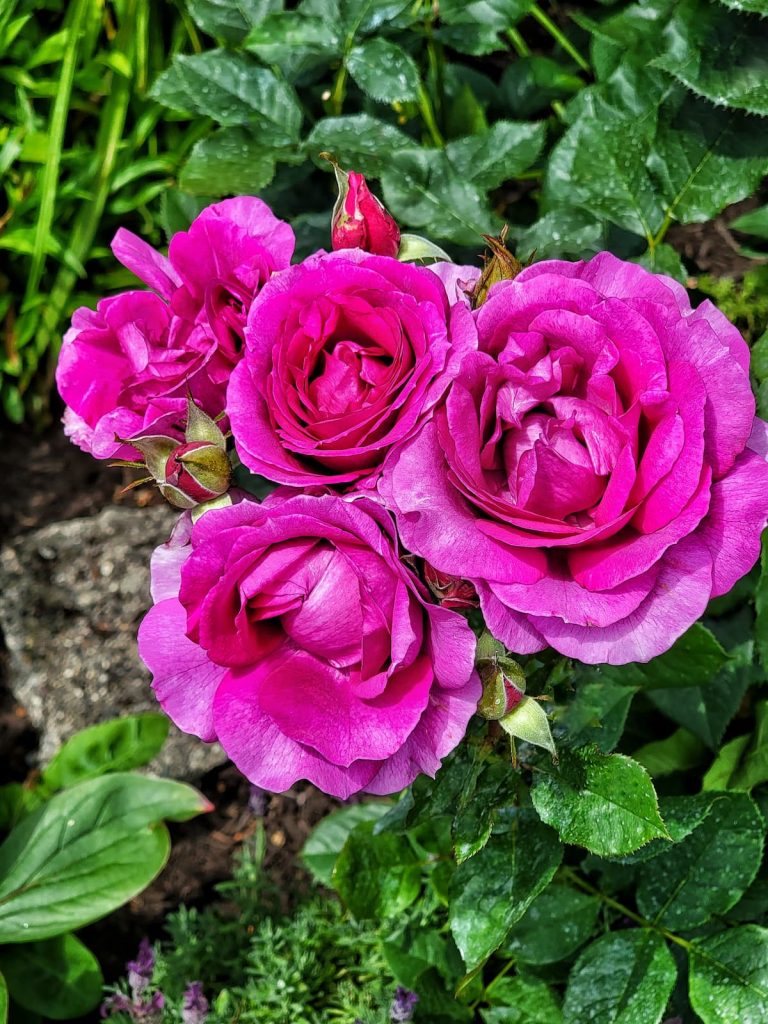
Chives help repel aphids and other pests that commonly attack roses, reducing the need for chemical pesticides. Both plants attract beneficial insects like bees, which aid in pollination.
The tall, slender chive stalks with their purple pom-pom flowers create a lovely contrast to the larger, showy blooms of roses.
Dill and Sunflowers
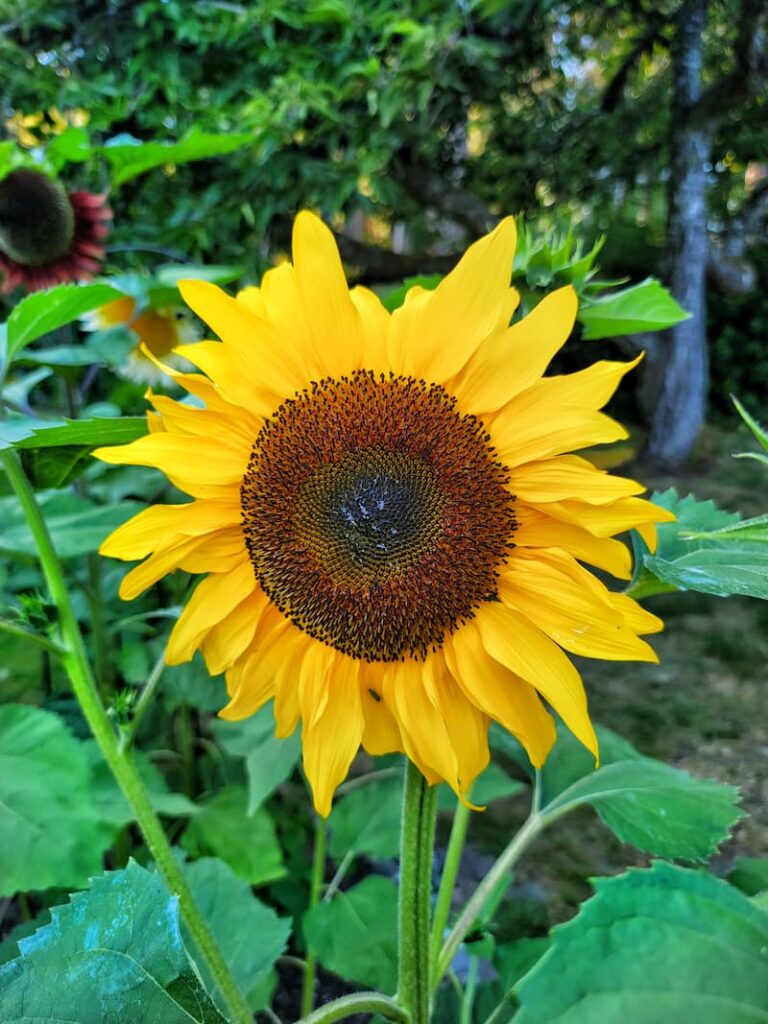
Dill attracts beneficial insects like ladybugs and parasitic wasps, which help control aphids and other pests. Sunflowers can provide a natural trellis for dill, supporting its growth and preventing it from falling over.
The tall sunflowers and feathery dill add vertical interest and textural variety to the garden.
Parsley and Petunias
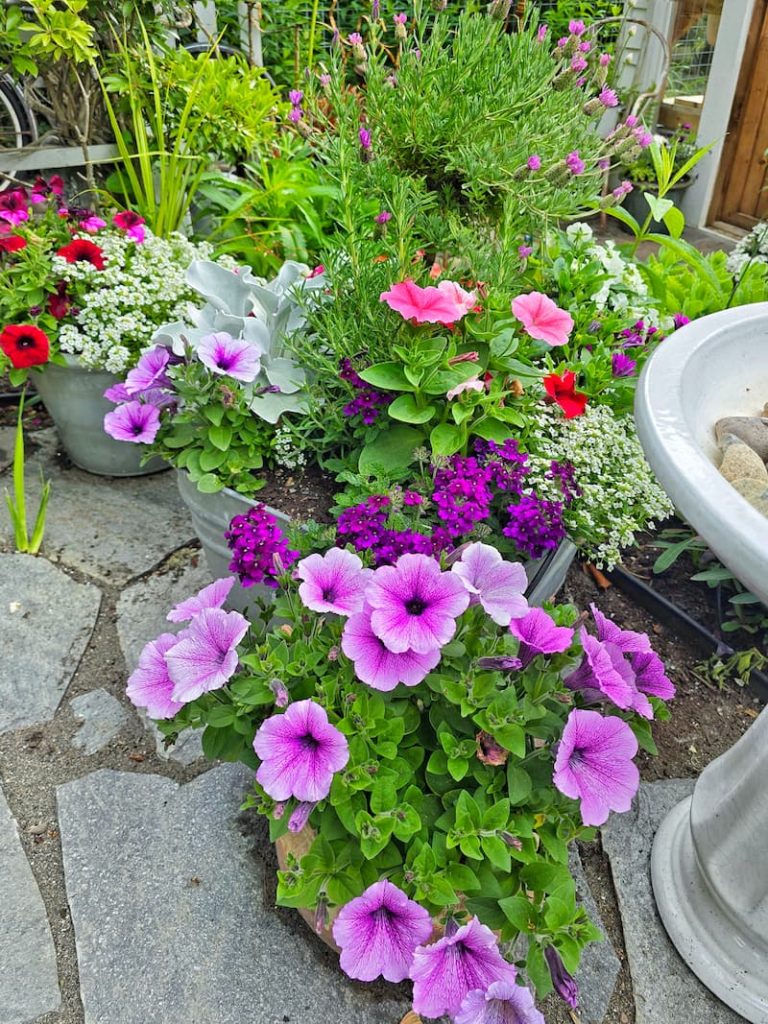
Parsley can deter beetles and other pests that may damage petunias. Its dense foliage helps cover the soil, reducing weed growth and retaining moisture for petunias.
The deep green of parsley complements the vibrant colors of petunias, creating a lush and colorful garden display.
Thyme and Alyssum
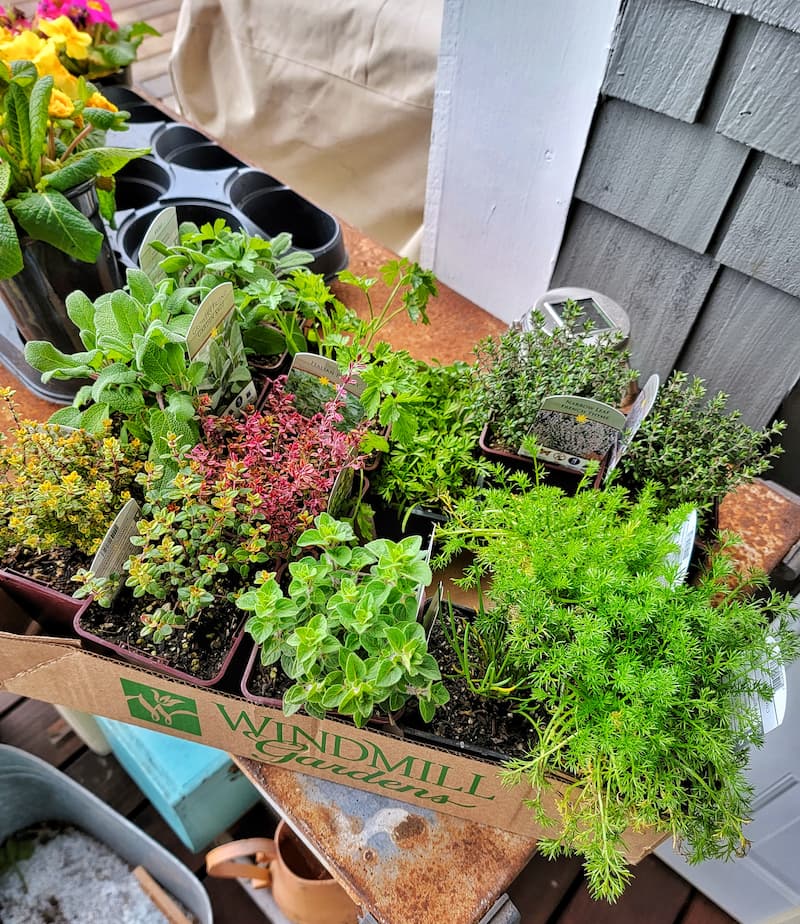
Both thyme and alyssum are low-growing plants that spread out, providing excellent ground cover to suppress weeds.
Thyme attracts beneficial insects like bees, while alyssum attracts hoverflies and parasitic wasps that help control pests.
The fine-textured leaves of thyme complement the delicate flowers of alyssum, creating a cohesive and attractive garden bed.
Mint and Zinnias
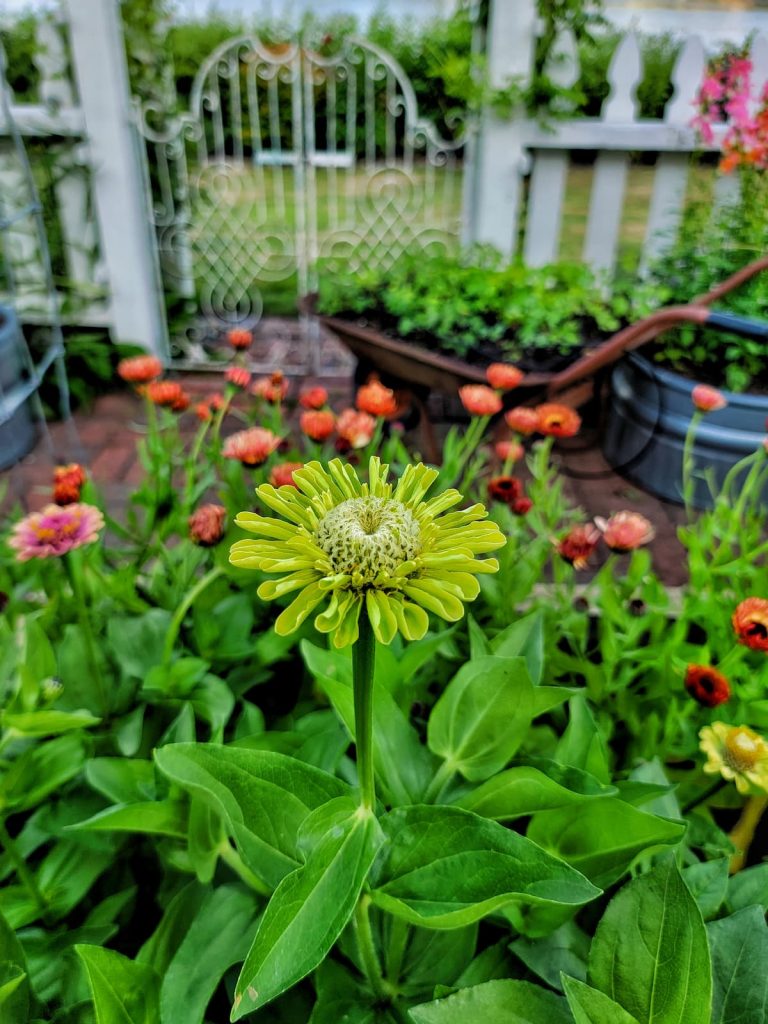
Mint repels aphids, ants, and flea beetles, providing a protective barrier for zinnias. Both mint and zinnias attract bees and butterflies, enhancing pollination in the garden.
The lush, spreading habit of mint contrasts nicely with the upright, colorful blooms of zinnias, adding variety to the garden layout.
Gardening Made Simple – Your Guide to Beginning Gardening
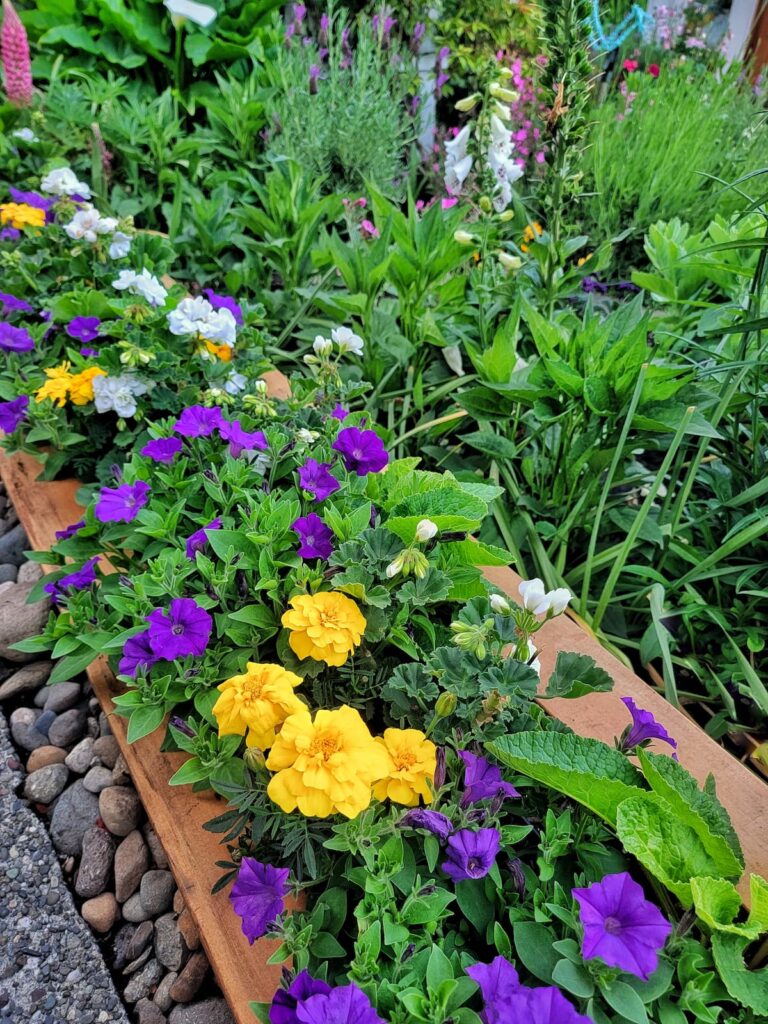
Common Companion Planting Questions
What Flowers Can You Plant Next to Each Other?
Choosing the right flowers to plant next to each other can enhance your garden’s beauty and health. Some great flower pairings are based on their compatibility, benefits, and visual appeal.
Is It Okay to Plant Flowers Next to Vegetables?
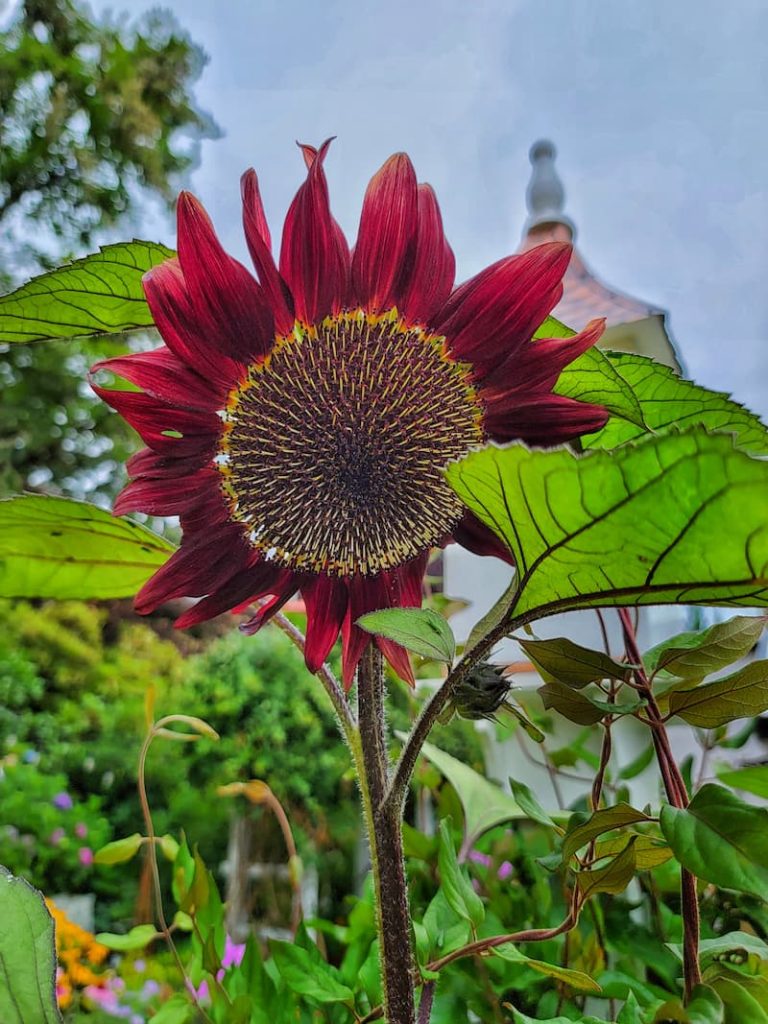
Absolutely! Planting flowers next to vegetables is a highly beneficial practice called companion planting. This method can improve your garden’s health, productivity, and aesthetics.
Here are some key benefits and considerations for planting flowers alongside vegetables:
Benefits of Planting Flowers Next to Vegetables
Pest Control
Attracting Beneficial Insects
Improving Soil Health
Aesthetic Appeal
Considerations for Planting Flowers Next to Vegetables
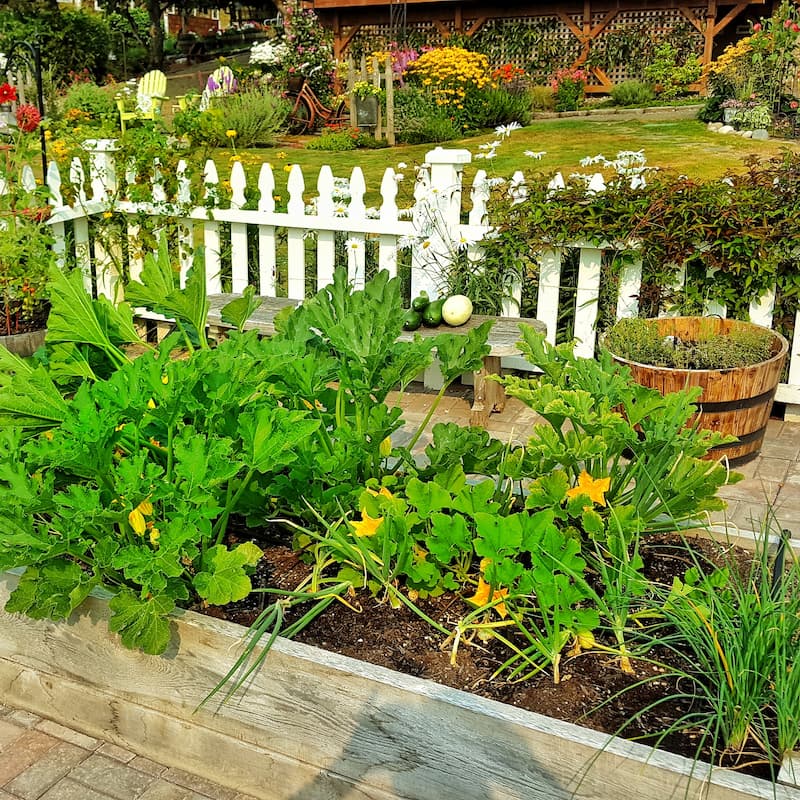
Compatibility
Space Management
Timing
Suggested Flower and Vegetable Pairings
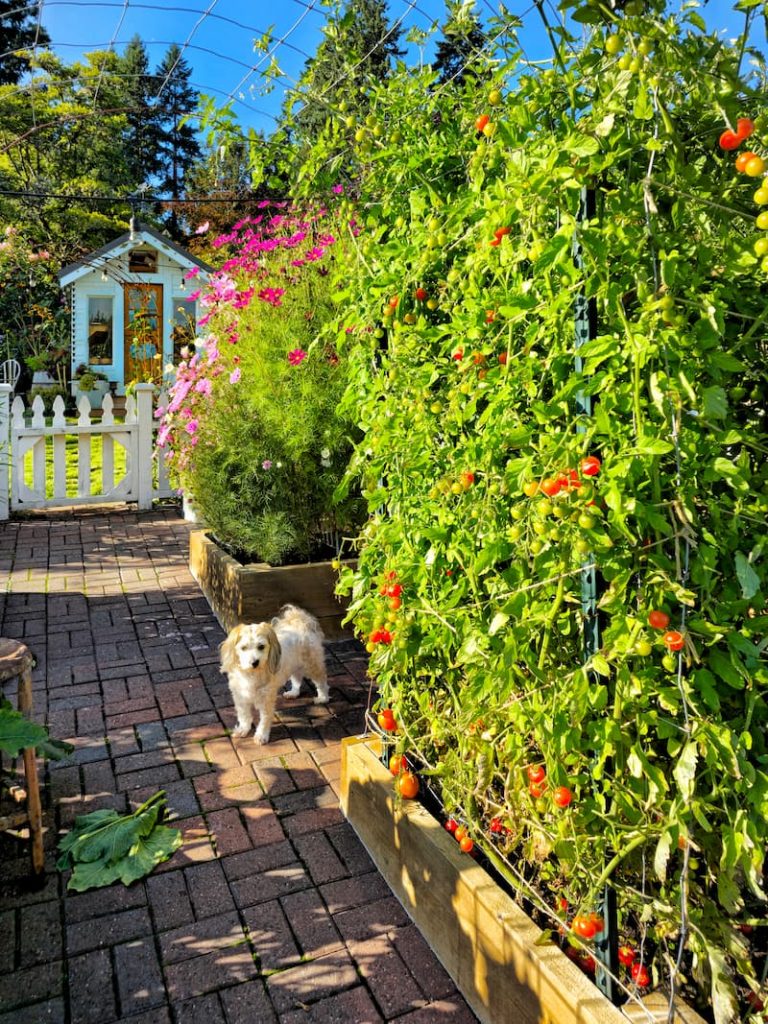
What are the Best Cut Flowers to Use in Companion Planting Schemes?
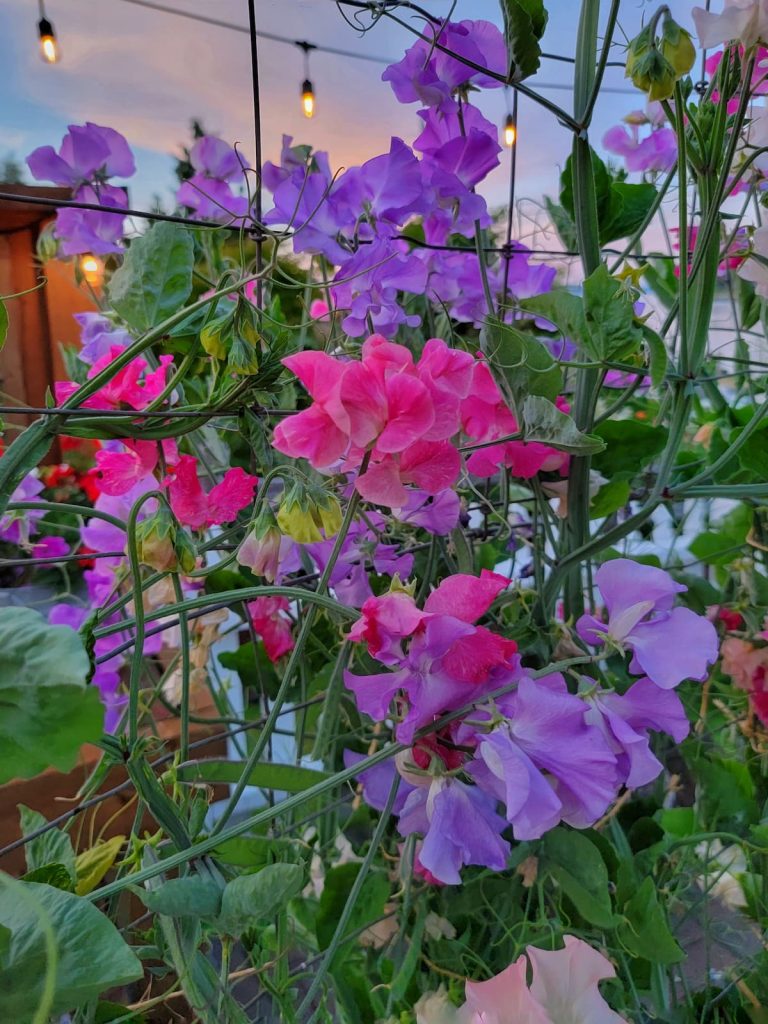
Incorporating cut flowers into your companion planting schemes enhances the beauty and diversity of your garden and provides fresh blooms for indoor arrangements.
Here are some of the best cut flowers that serve dual purposes: they thrive in companion planting setups and make stunning additions to floral bouquets.
What Flowers Should Not Be Planted Together?
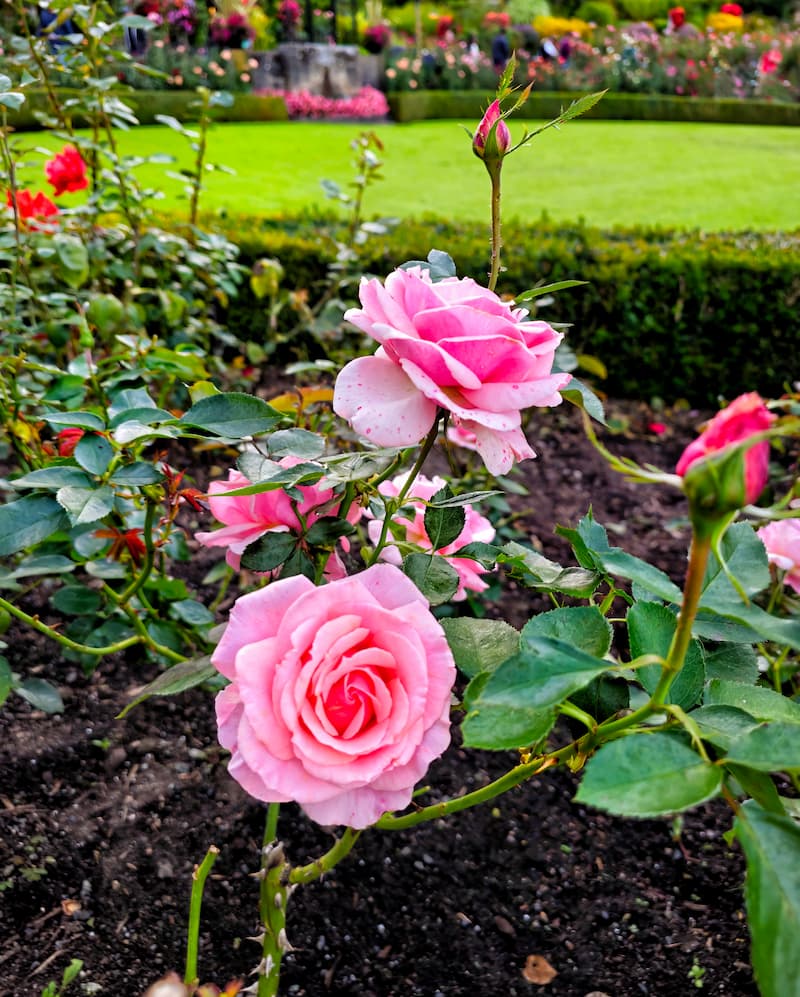
While many flowers complement each other well in the garden, some combinations can lead to poor growth, increased pest issues, or competition for resources.
Here are some flowers that should not be planted together and why they are incompatible.
Roses and Garlic
Fennel and Most Other Plants
Carrots and Dill
Sunflowers and Potatoes
Hyacinths and Narcissus (Daffodils)
Mint and Most Other Herbs/Flowers
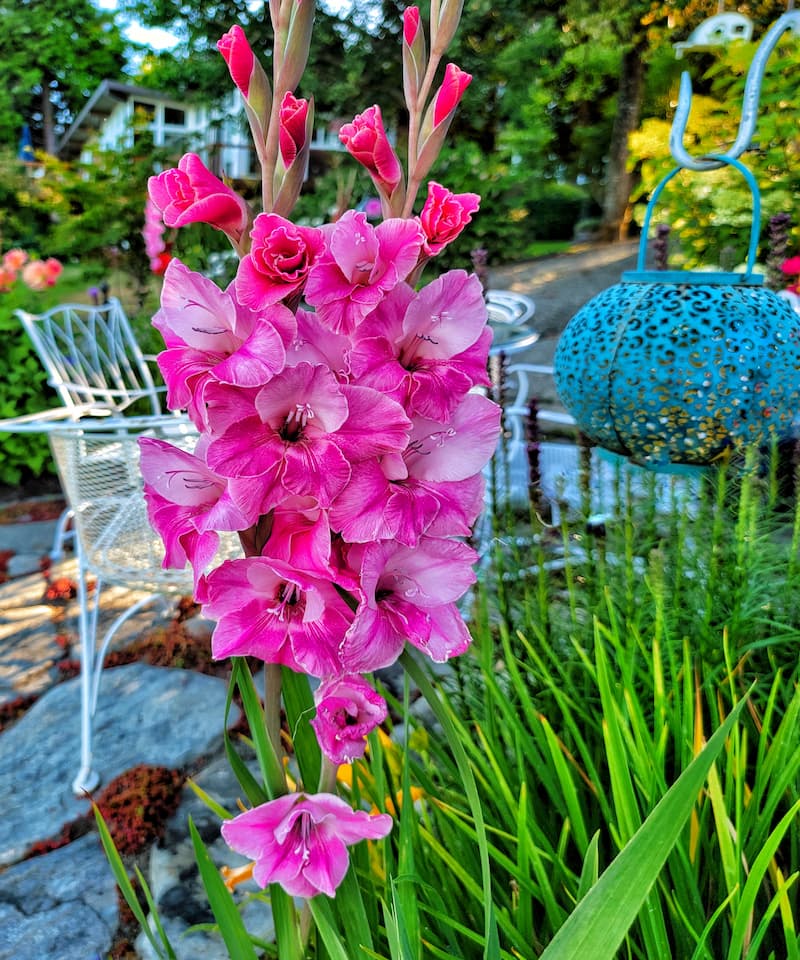
Gladiolus and Peas
Marigolds and Beans
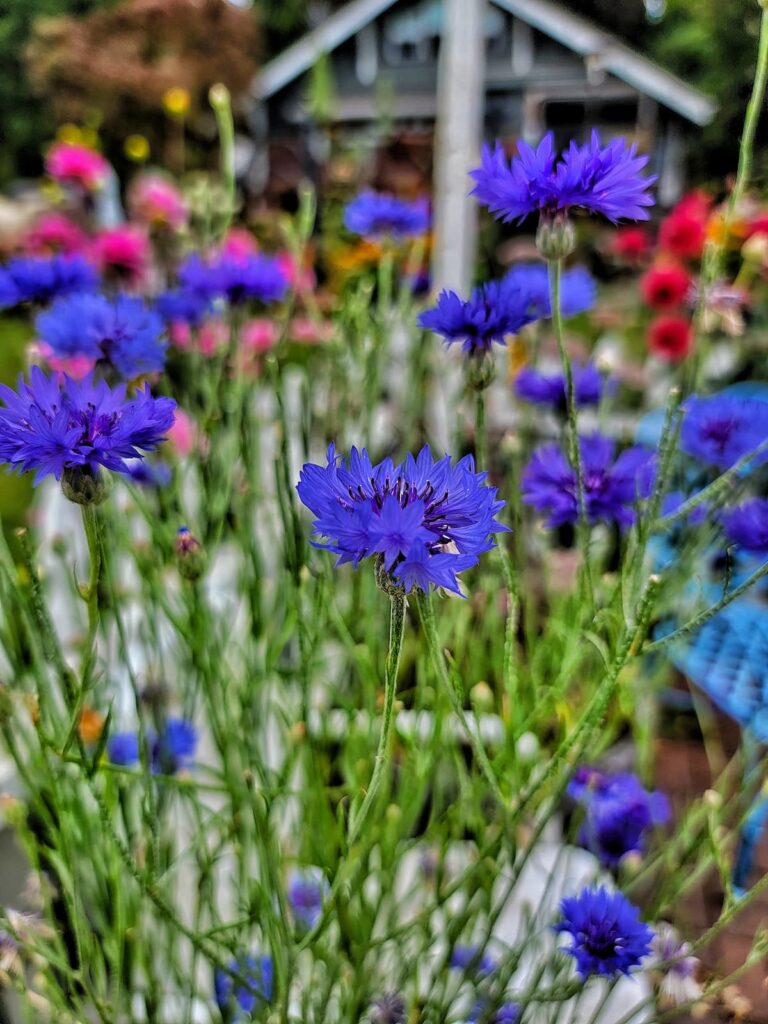
Cornflowers (Bachelor’s Buttons) and Roses
Irises and Other Bulbs
General Tips for Avoiding Incompatibility
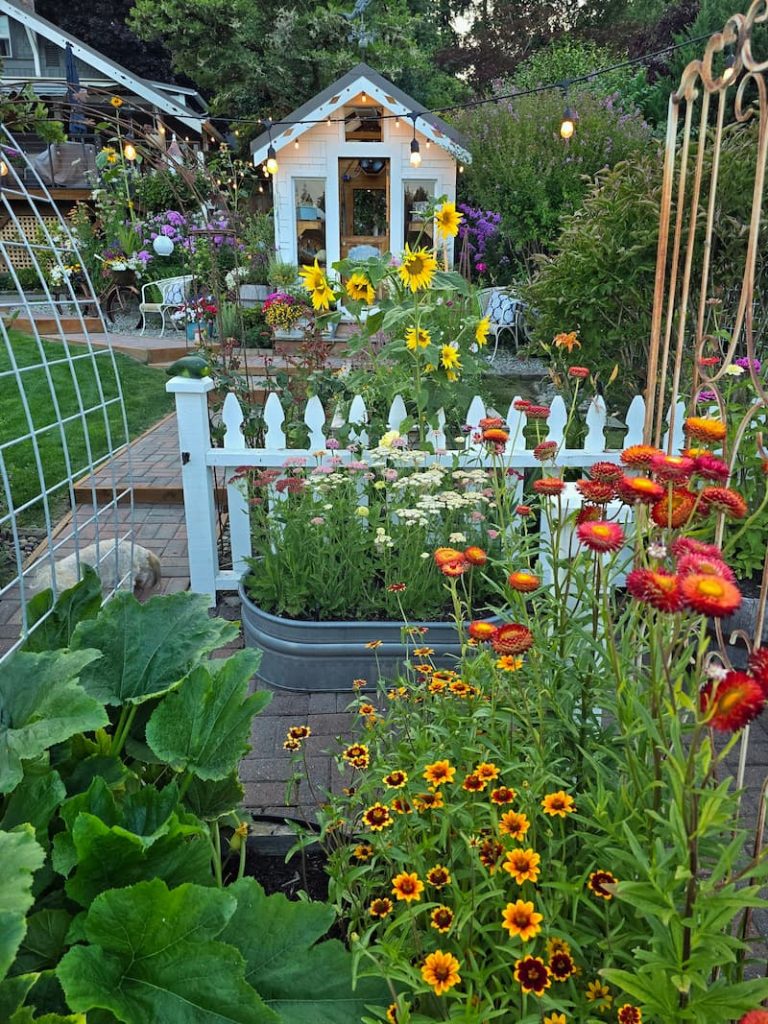
Research Specific Needs
Always research the specific needs and characteristics of the flowers you plan to grow together.
Consider Soil and Water Requirements
Ensure that companion plants have similar soil and water requirements.
Watch for Allelopathic Plants
Be cautious with plants known for allelopathic properties, such as fennel and sunflowers.
Manage Invasive Species
Keep invasive species like mint in containers to prevent them from overtaking garden beds.
What Flowers Can Be Planted Together?
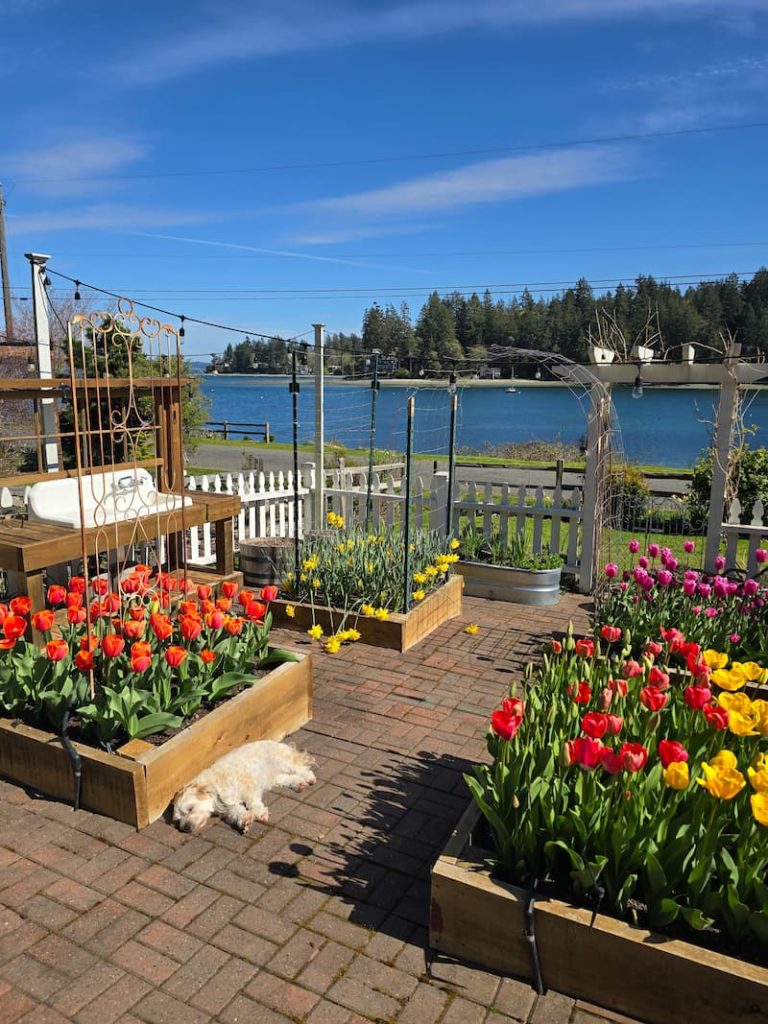
Choosing the right flower combinations can enhance your garden’s beauty, health, and productivity.
Here are some flowers that thrive when planted together, along with the benefits they bring to each other and the overall garden ecosystem.
Companion Planting Chart for Flowers
Here’s a chart to help you plan your garden using companion planting guides for flowers. This chart lists popular flowers, their beneficial companions, and flowers they should be planted away from.
| Flower | Companion Flowers | Benefits | Avoid Planting With | Reason |
|---|---|---|---|---|
| Roses | Lavender, Geraniums, Marigolds | Repels pests, attracts pollinators, improves soil health | Garlic, Fennel | Inhibits growth, competes for nutrients |
| Marigolds | Petunias, Nasturtiums, Zinnias | Repels nematodes, aphids, attracts beneficial insects | Beans, Cabbage | Can inhibit growth, compete for nutrients |
| Lavender | Roses, Echinacea, Sage | Repels pests, attracts pollinators, drought-tolerant | Mint | Mint can be invasive |
| Zinnias | Cosmos, Sunflowers, Marigolds | Attracts pollinators, adds vibrant color | Potatoes | Potential for pest attraction |
| Sunflowers | Nasturtiums, Zinnias, Marigolds | Attracts pollinators, acts as a trap crop | Potatoes, Beans | Allelopathic properties, competes for nutrients |
| Tulips | Daffodils, Hyacinths, Crocuses | Early spring blooms, complementary heights, adds color | Fennel | Fennel can inhibit growth |
| Nasturtiums | Marigolds, Sunflowers, Beans | Acts as trap crop, attracts pollinators | Potatoes, Broccoli | Can attract pests that harm these vegetables |
| Dahlias | Snapdragons, Zinnias, Sunflowers | Attracts beneficial insects, adds color and structure | Carrots | Potential for pest attraction |
| Cosmos | Zinnias, Marigolds, Sunflowers | Attracts pollinators, adds airy structure | Potatoes | Can attract pests |
| Petunias | Marigolds, Lavender, Geraniums | Repels pests, attracts pollinators | Beans, Broccoli | Potential for pest attraction |
| Geraniums | Roses, Marigolds, Petunias | Repels pests, attracts pollinators, improves soil health | Fennel | Fennel can inhibit growth |
| Echinacea | Lavender, Sunflowers, Bee Balm | Attracts pollinators, adds height and color | Garlic, Mint | Can inhibit growth, compete for nutrients |
| Bee Balm | Echinacea, Black-Eyed Susan, Phlox | Attracts pollinators, improves soil health | Carrots, Beans | Can attract pests |
| Black-Eyed Susan | Bee Balm, Echinacea, Salvia | Attracts pollinators, adds height and color | Fennel | Fennel can inhibit growth |
| Sweet Alyssum | Impatiens, Petunias, Marigolds | Attracts beneficial insects, provides ground cover | Fennel | Fennel can inhibit growth |
| Snapdragons | Dahlias, Marigolds, Petunias | Repels pests, attracts pollinators, adds vertical interest | Carrots, Beans | Potential for pest attraction |
| Calendula | Carrots, Tomatoes, Nasturtiums | Repels pests, attracts pollinators, improves soil health | Potatoes | Potential for pest attraction |
Notes on Usage
How to Use This Chart
Garden Supplies and Tools
Check out my favorite garden supplies and tools for the growing season. Whether you’re looking for potting soil or deer repellent, you’ll find what I use in my own garden.
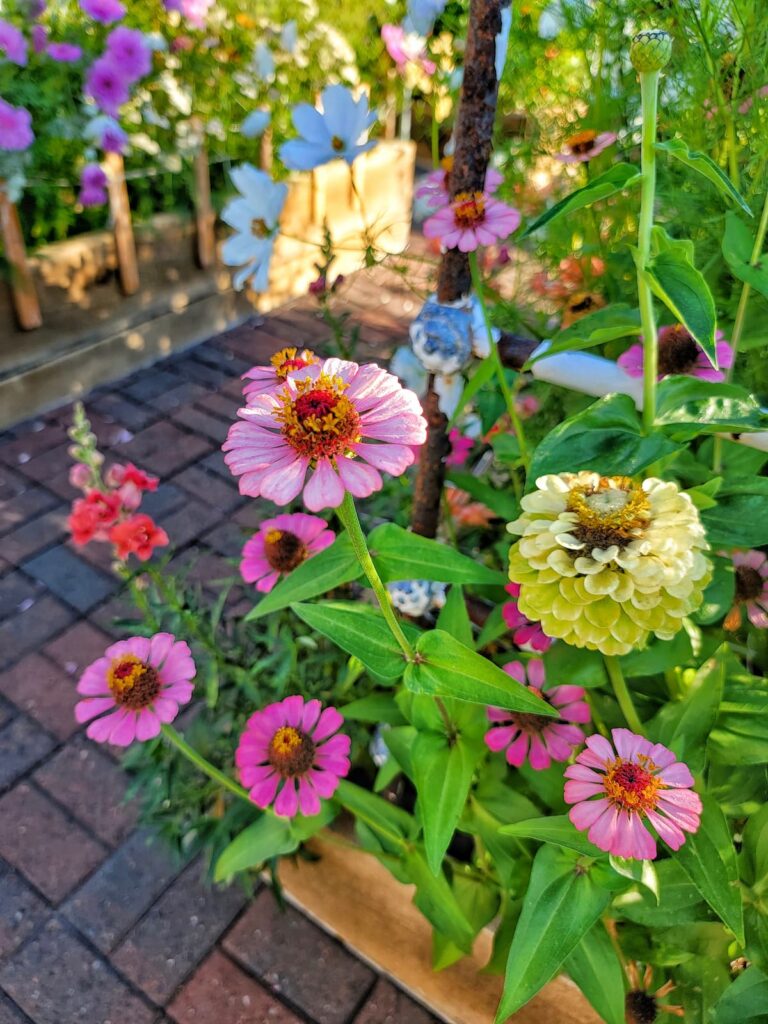
Final Flower Companion Planting
Companion planting with flowers is a practical way to enhance the beauty and productivity of your garden.
By carefully selecting flowers that complement each other and their neighboring vegetables or herbs, you can create a thriving ecosystem that benefits from natural pest control, improved pollination, and enriched soil health.
Whether your goal is to deter pests, attract beneficial insects, or simply enjoy a more vibrant and colorful garden, the thoughtful combinations outlined in this post can help you make the best choices for your unique gardening space.
If you have any questions or additional suggestions, please share them in the comments below. And be sure to share this blog post link with anyone who may find these gardening tips useful.
Until next time,
Happy Gardening!

I’m a self-taught hobby gardener. Everything I share on my blog is my opinion and what has worked for me.
MORE POSTS
For You To Enjoy
Follow Me for More Inspiration
Shop my Amazon Storefront, LTK sources, and my favorite home decor, garden, and lifestyle products. When you purchase from one of my links, I earn a small commission, which helps me continue sharing all the content you expect on my blog.
Be sure to follow me on Pinterest, Instagram, Facebook, TikTok and LIKEtoKNOW.it. Do you like gardening? Join my Facebook Gardening Tips & Tricks group.

